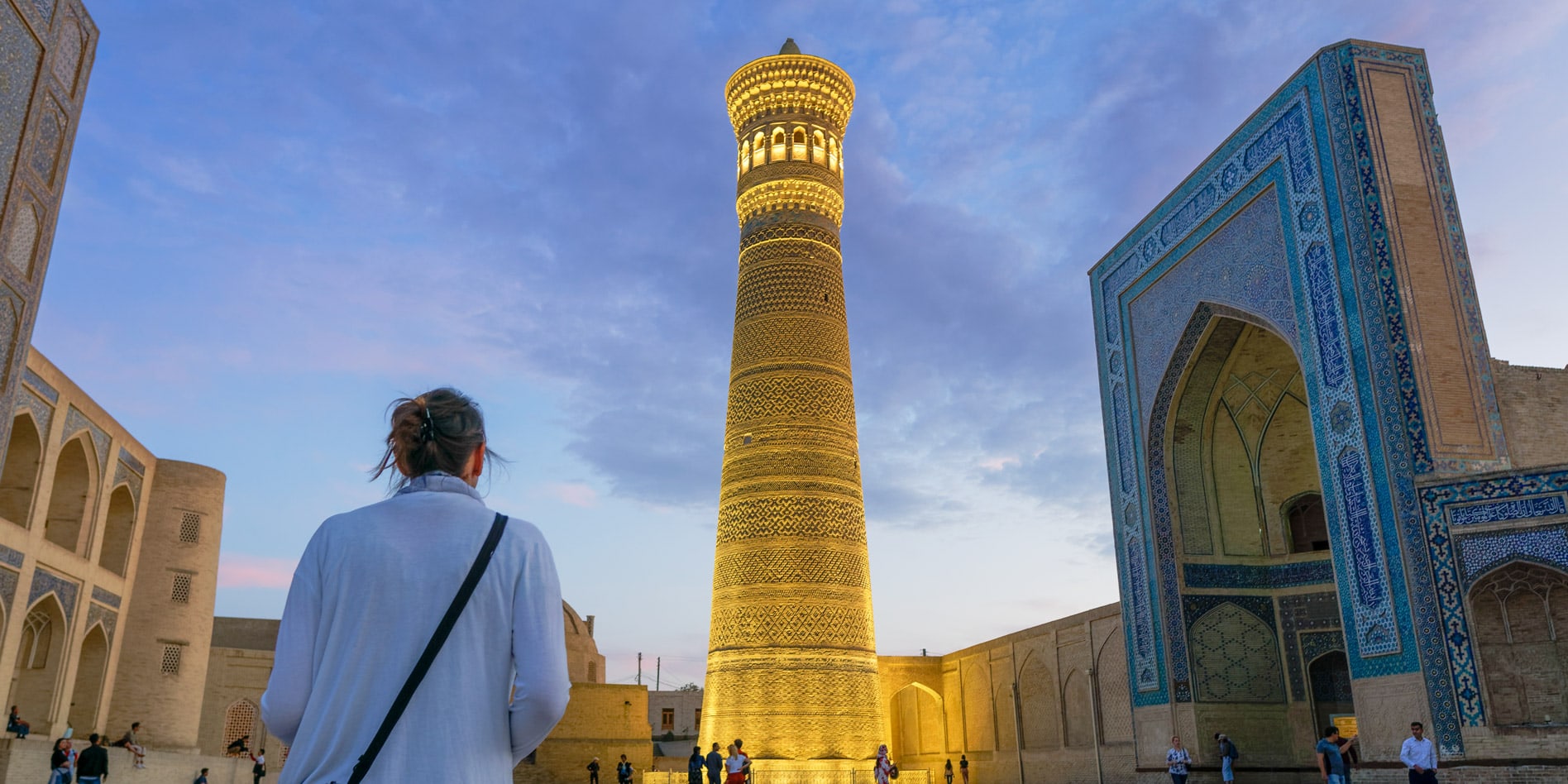Looking for the best things to do in Bukhara? This off-the-beaten-path destination offers a multitude of amazing sights and experiences.
The historic city centre of Bukhara, over 2000 years old, is a treasure trove of architectural wonders. With over 140 stunning madrasahs, mosques, and other buildings, it was recognized as a UNESCO World Heritage site in 1993.
From the 8th to the 17th centuries, the city flourished as a vital stop on the Silk Road, linking it to Tashkent and Samarkand and establishing it as a significant economic and Islamic cultural hub.
You now become the modern-day Marco Polo who wanders and marvels at the architectural magnificence of Bukhara. You won’t be left short on what to do in Bukhara.
We visited Bukhara as part of our two-week Uzbekistan itinerary, immersing ourselves in the city’s rich history, vibrant culture, and stunning architecture. Discover why our experience here was nothing short of extraordinary.
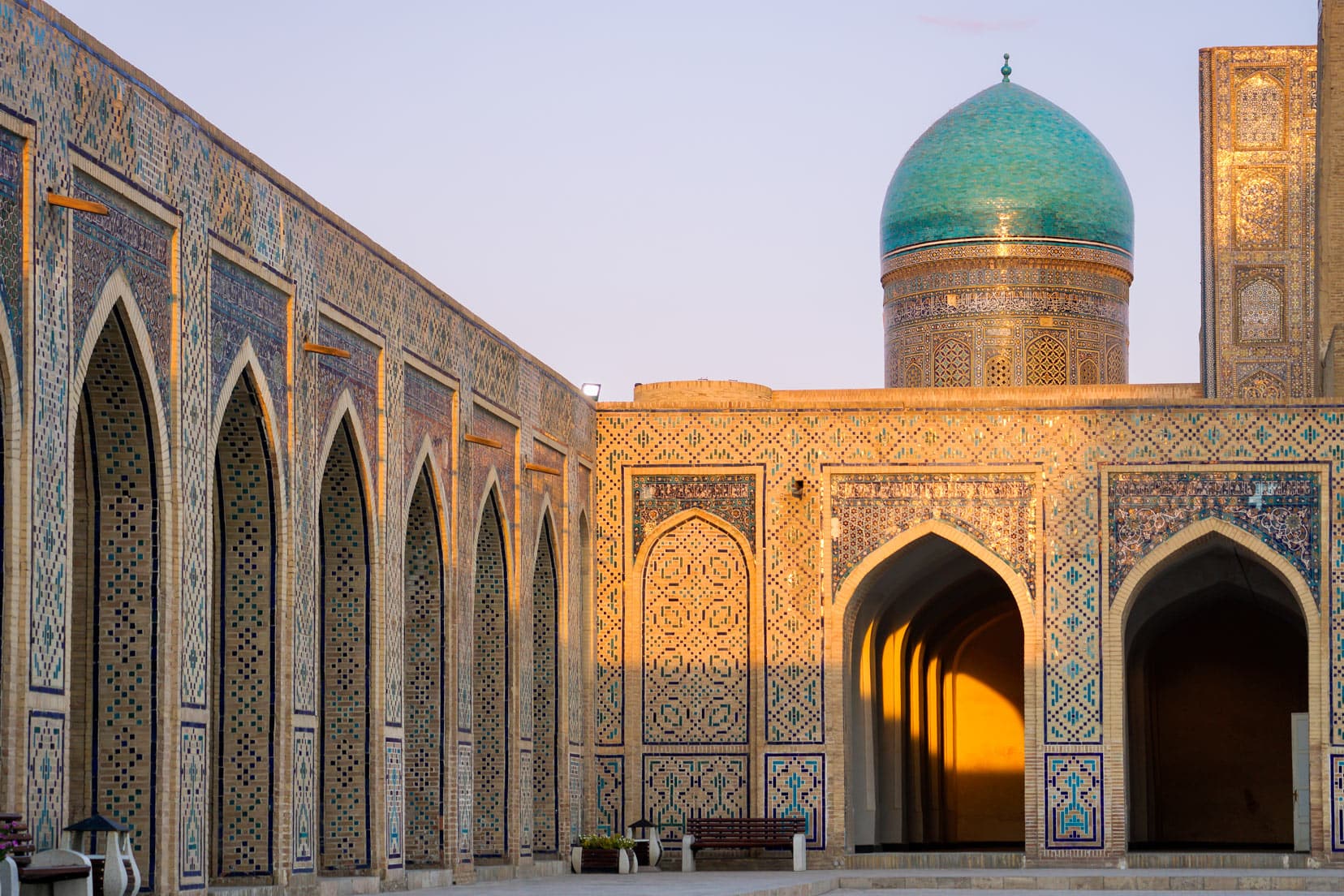
21 Top Things to Do in Bukhara Post: In a Nutshell
If you’re short on time, here’s a quick snapshot of what you can’t miss in Bukhara:
- Historic City: A UNESCO treasure with over 140 sites from the Silk Road era.
- Ideal Times to Visit: Aim for the pleasant weather of spring (March-May) or autumn (September-November).
- Must-Sees:
- Lyabi Khause: A bustling historic centre with a vibrant night scene.
- Po-i-Kalyan Complex: Stunning Islamic architecture that dominates the cityscape.
- The Ark: An ancient fortress turned museum, rich in history.
- Local Experience: Enjoy the traditional music and craft at Lyabi Khause and discover the art of Suzani embroidery.
- Travel Essentials: Use our interactive map for easy navigation and consult our travel tips for seamless planning.
- Where to Stay: The Meros Hotel l near Lyabi-Hauz offers a prime location and top-rated amenities.
This condensed guide gives you the essentials, ensuring you experience the best of Bukhara even on a tight schedule.
Dive deeper into our full guide below for all the details and more hidden gems!

To help you plan your trip to Bukhara, we have included the following:
Map: Bukhara Things to Do
When is the Best Time to Visit Uzbekistan?
Two periods in the year are the best times to visit Uzbekistan to avoid the temperature extremes:
- Spring (March to May), and
- Autumn (September to November).
We visited in October and enjoyed lovely daytime temperatures between 15 and 20 degrees Celsius, topped off with clear, blue skies. Nighttime temperatures, however, did dip to single figures, with the wind adding the chill factor. So remember, pack some warm gear, too.
Visiting Bukhara outside of these seasons isn’t so bad. Winter temperatures can drop to -5 deg C, with summer temperatures climbing to 40 deg C. Our October autumn weather was just perfect.
Our visit to Bukhara, a city in the southwest of Uzbekistan, was preceded by visits to Tashkent and Samarkand. Our route was similar to that taken by those travel-savvy traders using the Silk Roads of old.
Have questions on the practicalities of visiting Uzbekistan?
Our comprehensive guide on Uzbek travel tips will have you sorted.
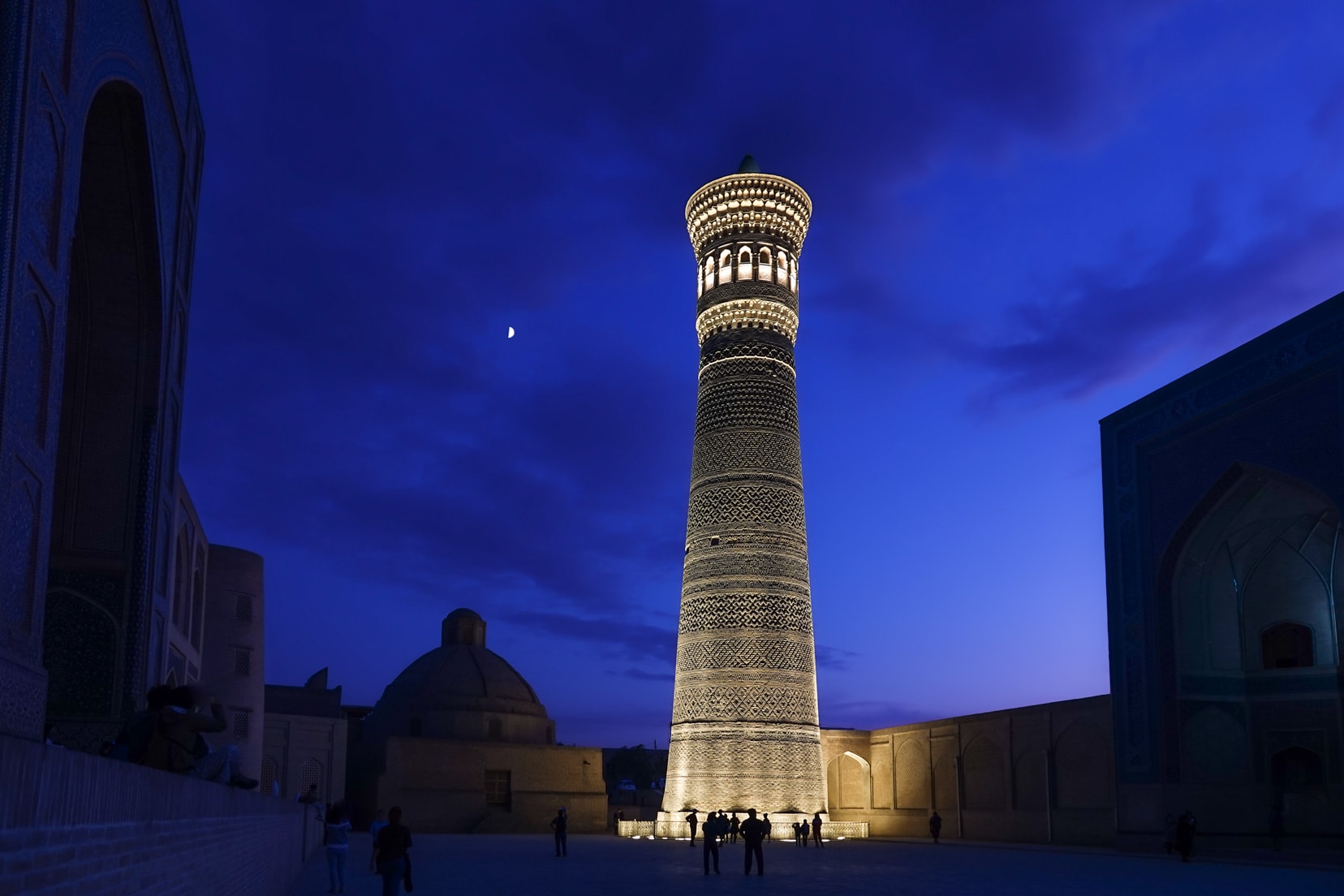
Planning a Trip to Uzbekistan?
- 🚗 Hiring a car? We recommend getting a quote from DiscoverCars
- 🚐 Hiring a campervan? We recommend Motorhome Republic
- ⛑ Arranged your travel insurance? Compare quotes from World Nomads & Safetywing
- 🪪 Order your International Driver’s Licence online here
- 🏩 Booked your accommodation? We use Booking.com to find the best deals
- 🐾 Is someone pet-sitting for you? 🐾 We use and love TrustedHousesitters
- (Get 25% off at checkout for new memberships with our discount code: LIFEJOURNEY25)
Top 21 Things To Do In Bukhara
Here’s our list of the top 21 Bukhara attractions that we visited. We spent two pleasurable days ambling the streets during the day and evening.
A real selling point for visitors is that all these highlights are within an easy walk of the other, meaning you get the most out of your available time.
1. Visit Lyabi Khause
Bukhara’s old city centre radiates from the central Lyabi-Hauz, also known as Lyabi Khause.
Locals once used a hauz (or pond) to collect water, but during the Soviet reign (1924 to 1991), many of these pools were filled in due to sanitary reasons.
Only a few remain in Bukhara.

Lyabi Khause, with its palm tree-fringed perimeter, is a popular meeting place for locals and travellers alike. Don’t miss taking a walk around Lyabi Khause to see the huge Mulberry tree near the kitchen area.
The tree was planted in 1477 A.D.
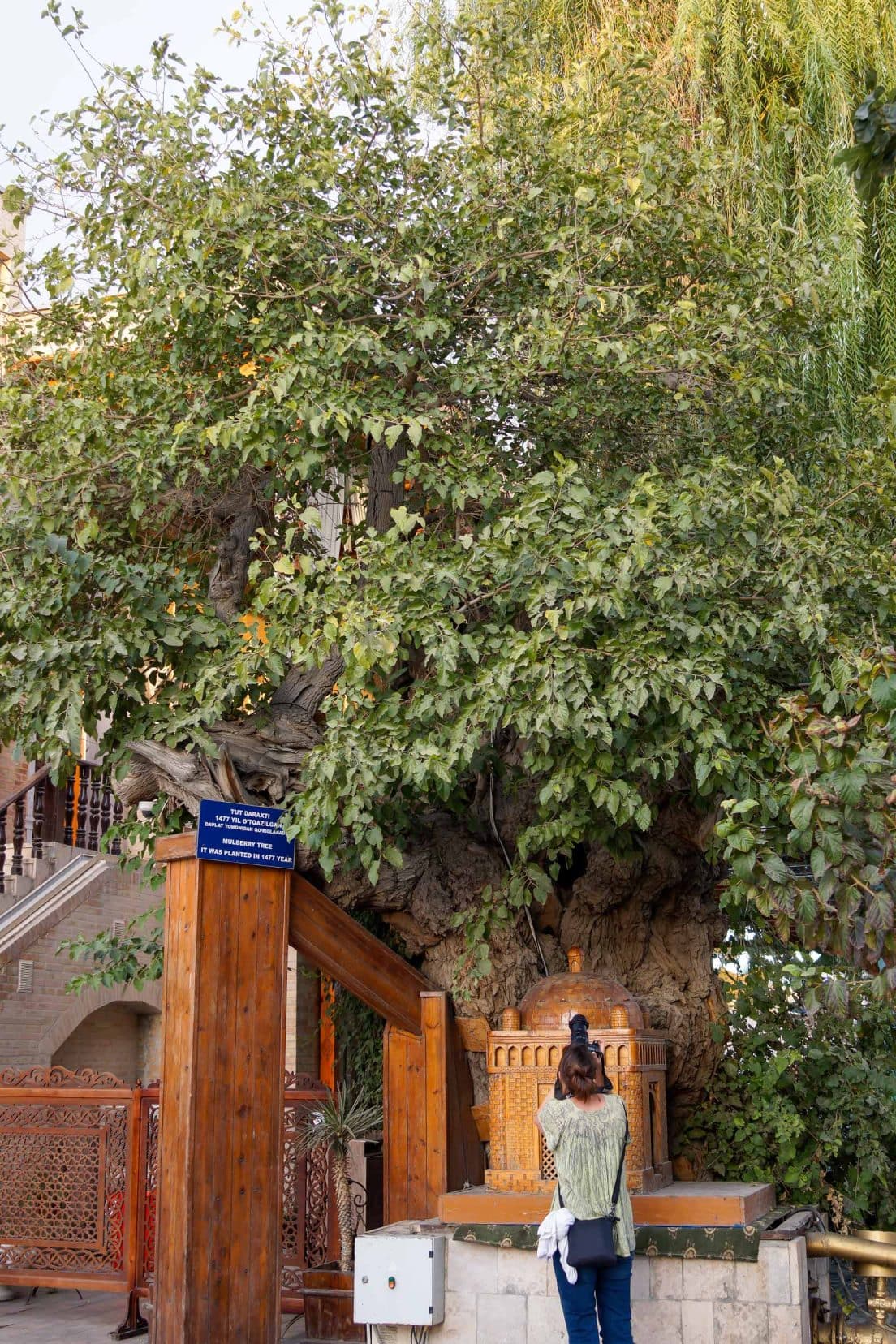
Quiet by day, Lyabi Khause comes alive at night.
The sounds of Uzbek musicians fill the air with soothing Middle Eastern tunes from a lute, a traditional Uzbek banjo-like string instrument.
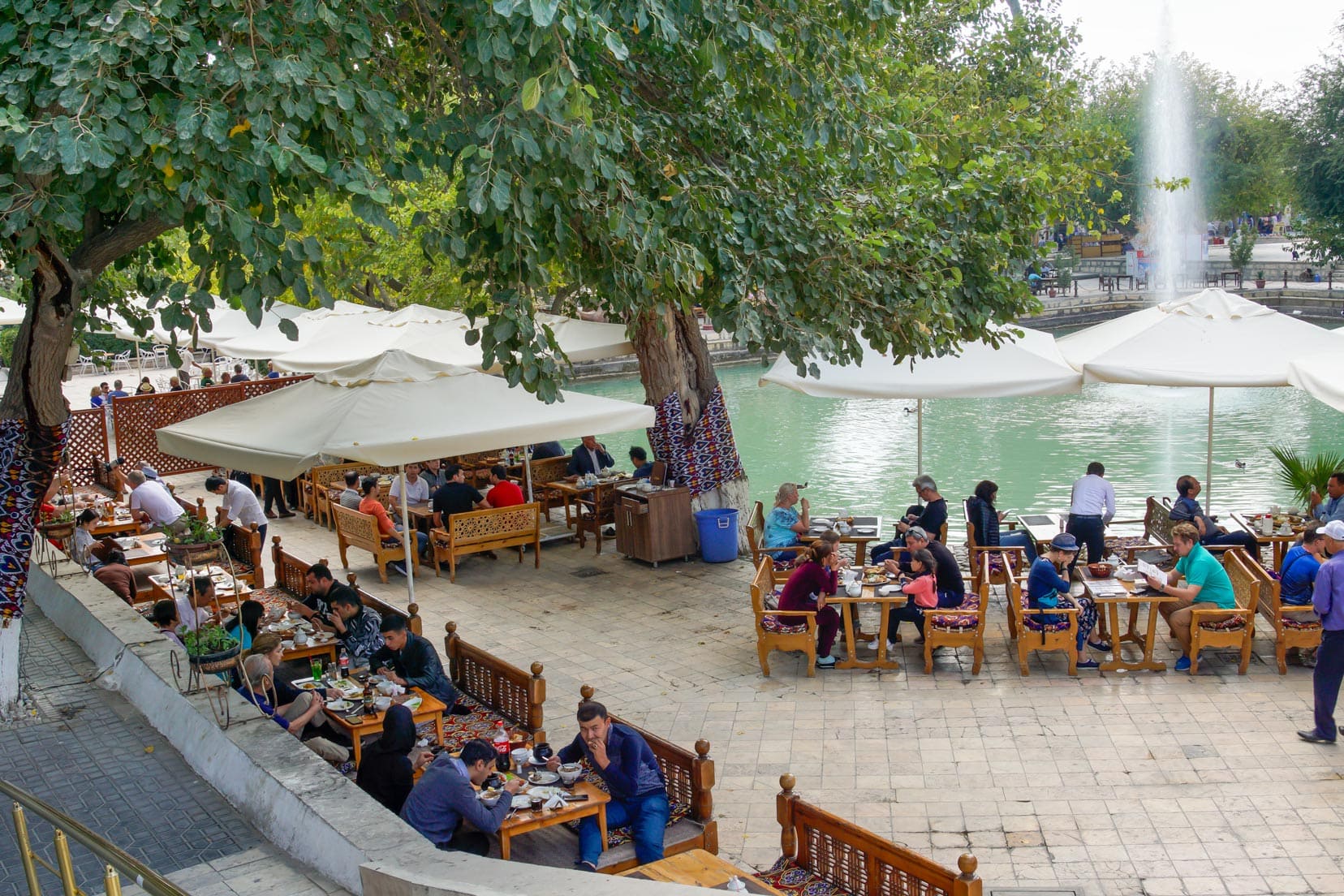
Waiters buzz between tables, skillfully taking orders and delivering round trays of local cuisine.
Nearby, a small queue forms with people waiting to sit, dine, and join the people-watching. Indeed, it’s a popular spot.
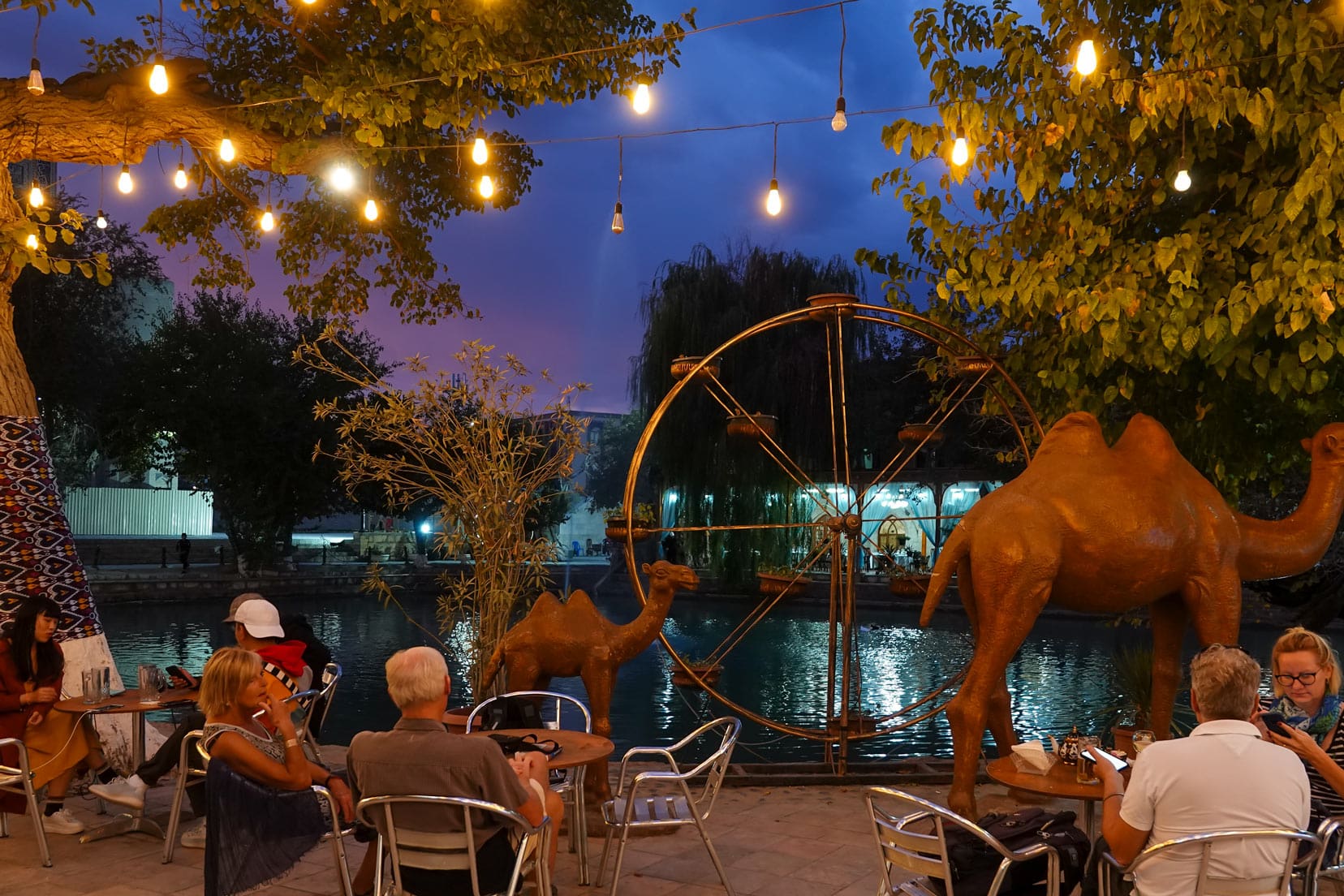
Some guests opt to relax on tapchans, traditional raised platforms for eating that are popular in Uzbekistan, adopting the customary cross-legged sitting position.
For those less flexible, chairs are also available.
The open-air area of Lyabi Khause, encircled by madrasahs, offers the perfect setting to immerse yourself in the ambience of Bukhara.
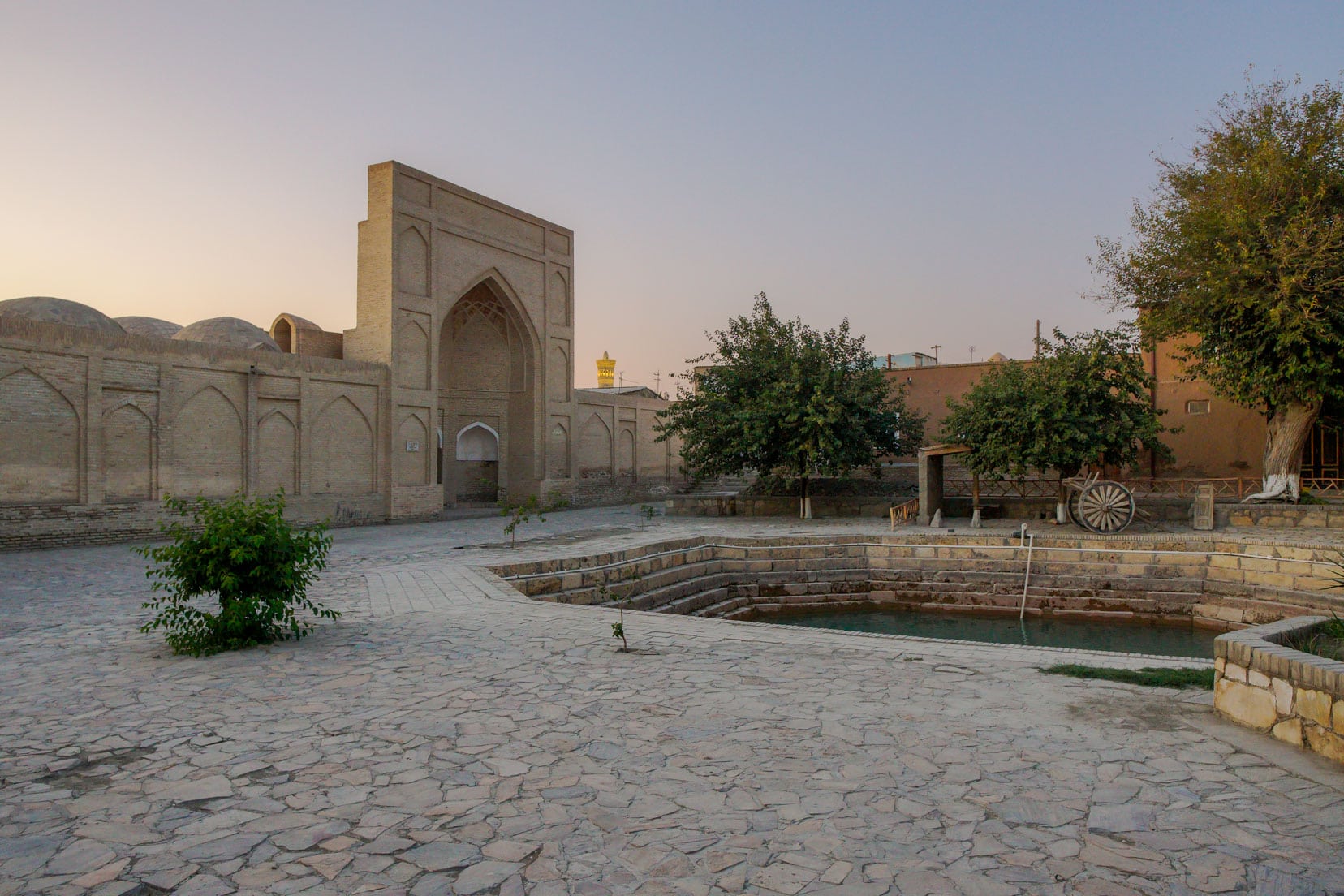
2. Explore Madrasah Nadir Devon Begi (at Lyab-I-Hauz Ensemble)
Madrasah Nadir Devon Begi is located east of Lyabi Khause and is one of three 17th-century complexes surrounding the Lyabi Khause pool.
The exterior mosaics of this madrasah display prominent, eye-catching depictions of colourful tigers and antelopes.
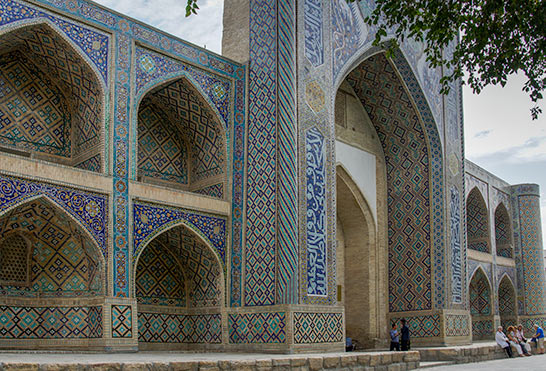
Whilst outside this madrasah, a rhythmic hammering noise caught our attention. Walking into the madrasah interior in search of the sounds, we discovered several artisans using hammers and chisels to delicately create patterns on soft metal plates.
It was common for a madrasah’s internal courtyard to house small handicraft shops within its walls, and this madrasah was no exception.
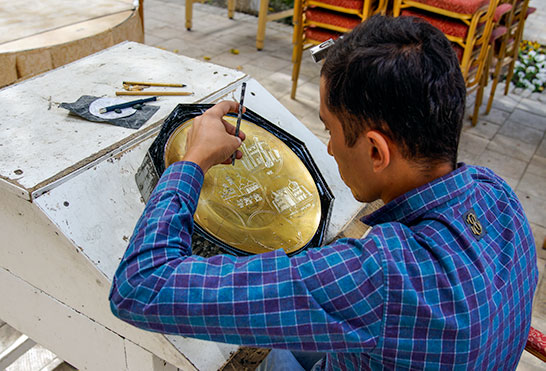
3. The Kukeldash Madrasah (at Lyab-I-Hauz Ensemble)
The Kukeldash Madrasah is found close by and to the northeast of Lyabi Krause.
The exterior of the building does not have the colourful artwork facade of the Madrasah Nadir Devon Begi, but don’t let that convince you it’s not worth a visit.
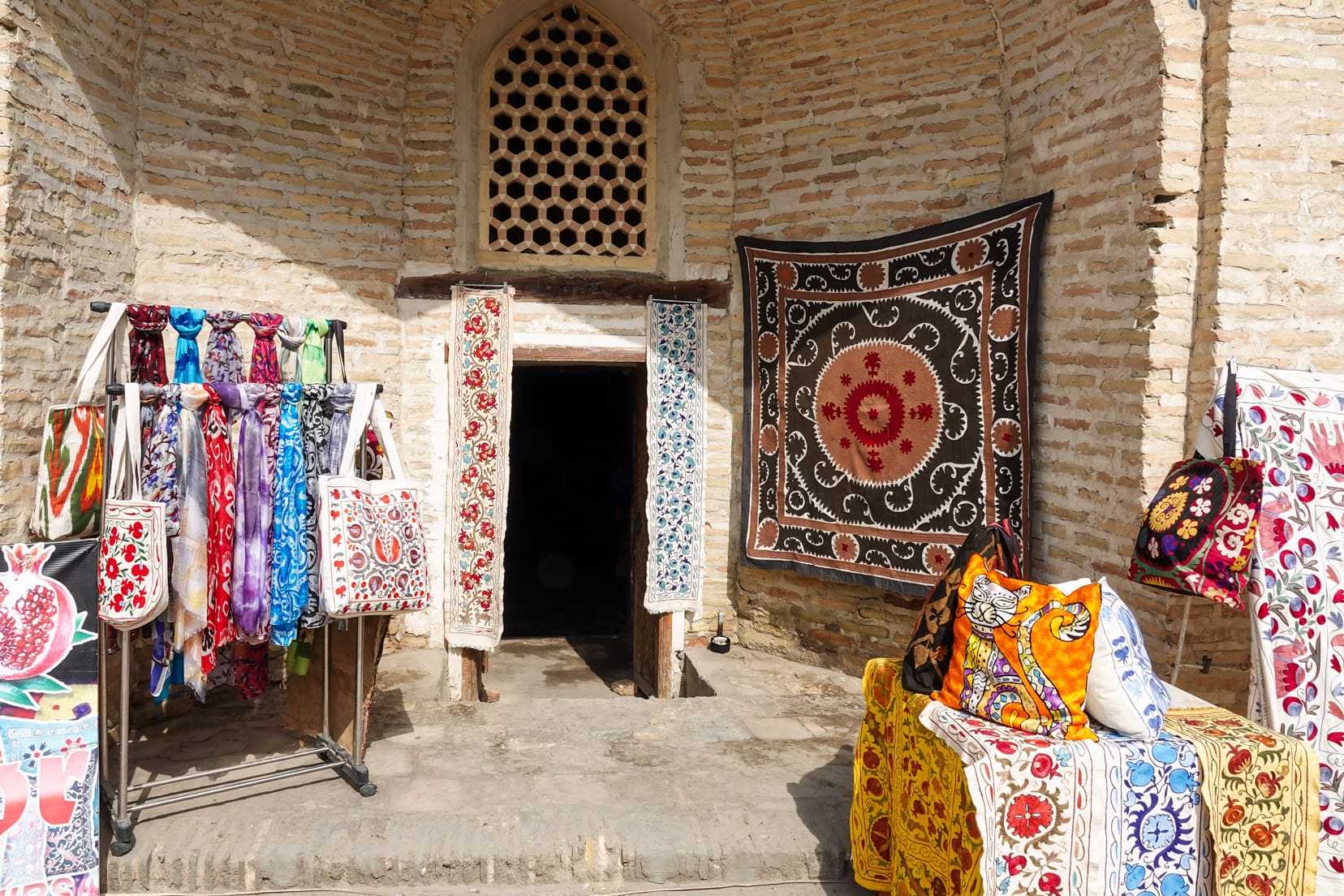
A small unobtrusive sign on the outside of the madrasah, Anor–Suzani Shopping Centre, with some of its handicrafts on display, lay within.
Upon entering, we noticed that the walls and floors were adorned with tapestries—not just any tapestries, but special Suzani needle-embroidered ones.
The proud owner, Zaynab Muradova, proudly showed us the differences between the Persian Suzani and other types of embroidery.
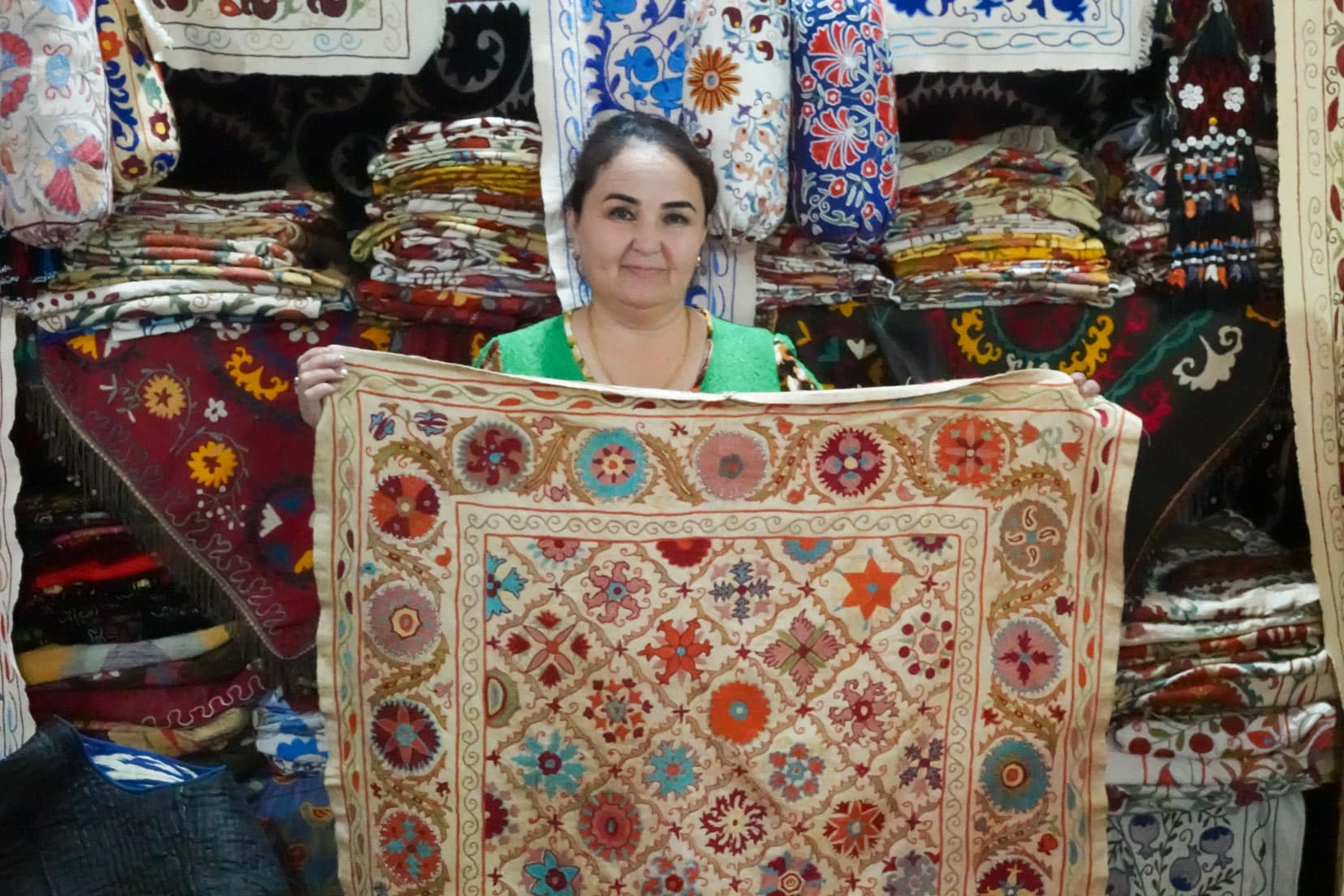
Zaynab explained how life stories were stitched into patterns and that depicting the popular pomegranate was a sign of good luck.
She explained that she is a Suzani embroidery teacher at the local university, and planned to offer tourists embroidery courses.
4. Nodir Devonbegi Tekke Khanaka (at Lyab-I-Hauz Ensemble)
The Nodir Devonbegi Tekke khanaka, or lodging house, is found west of Lyabi Krause.
During our visit, this khanaka was hidden behind the trees bordering Lyabi Krause, and fencing prevented us from entering the lodging house for a better look.
The front façade, similar to many of Bukhara’s historical buildings, is intricately worked with carved inscriptions.

5. Admire the Hodja Nasruddin Statue (at Lyab-I-Hauz Ensemble)
To the east of Lyabi Krause is an interesting statue of a comical-looking man gesturing with his hands on a somewhat undersized donkey.
This is the famous Hodja Nasruddin statue.
Hodja Nasruddin was possibly a scholar or learned man who lived during the 13th century. He travelled widely to share his life stories and wisdom through humour and wit.
He is a legend throughout Asia, Africa and Arabia, sometimes using a local derivative of his original name.
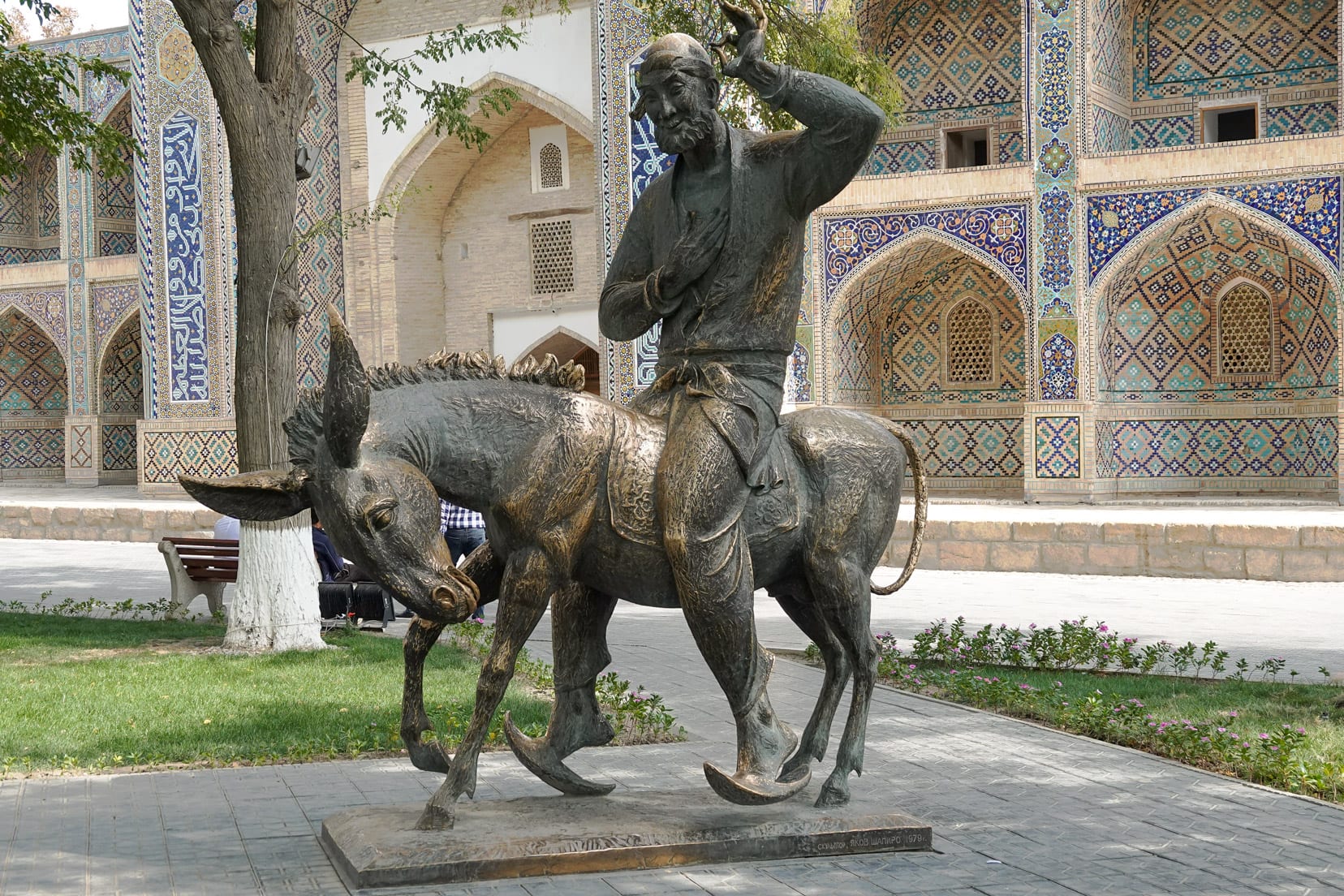
We watched a constant stream of people taking photos with Hodja and rubbing the statue for what we were told was good luck.
Hodja was probably laughing at all this fanfare, but regardless, he was certainly receiving plenty of attention from locals and visitors alike.
6. Visit Chor Minor and the Nearby Market
A mere 500m east of Lyabi Krause, the compact 19th-century Chor Minor gatehouse has four blue-domed towers.
Chor Minor was once used to access a now-destroyed madrasah and is sometimes called the Madrasah of Khalif Niyaz-kul.
Three towers, each adorned with different motifs, were used for storage, and one had an interior stairwell to the top.
Once inside Chor Minor, it was squeezing room only! A single vendor and his Uzbek traditional handicrafts packed the ground floor space.
Entry into Chor Minor is free.

We found an interesting pop-up market near Chor Minor. There, an array of old war memorabilia, including uniforms with medals from past wars, was on sale.
This was the only market selling this type of wares that we saw during our travels in Uzbekistan. Imagine the stories of bravery, sadness, and loss.
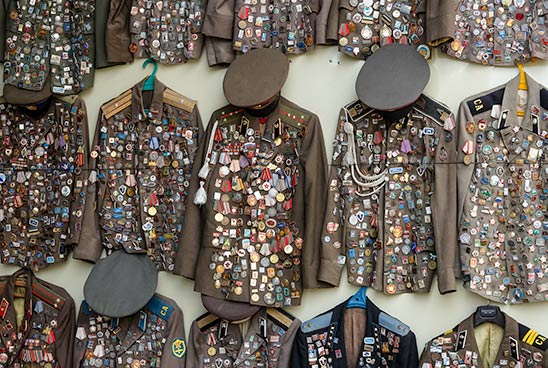
7. Bukhara Photo Gallery
If you are interested in photography, old cameras or prints of the old city, then the Bukhara Photo Gallery is the place to visit while in Bukhara.
This private gallery has paintings and prints depicting typical Uzbek life for sale.
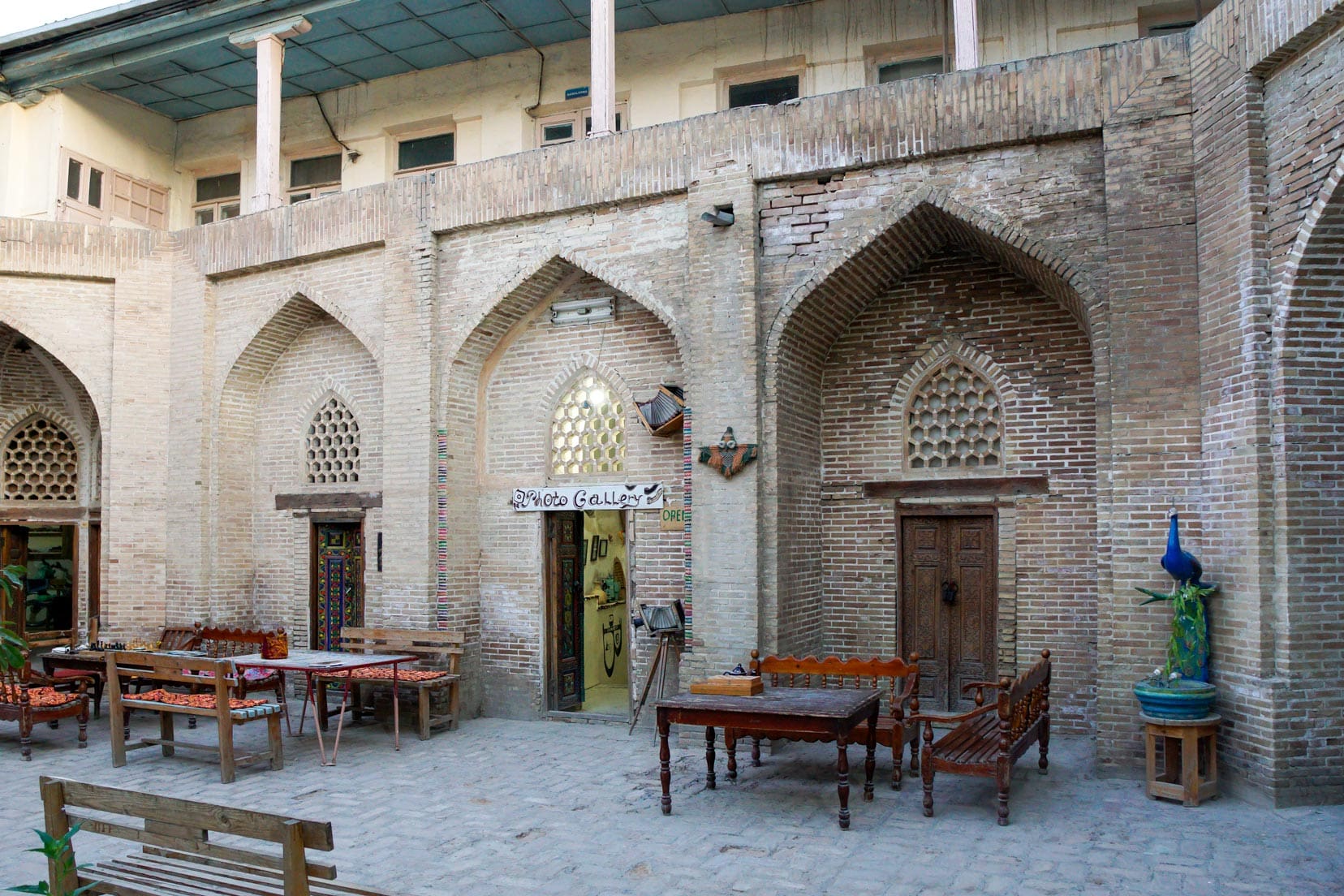
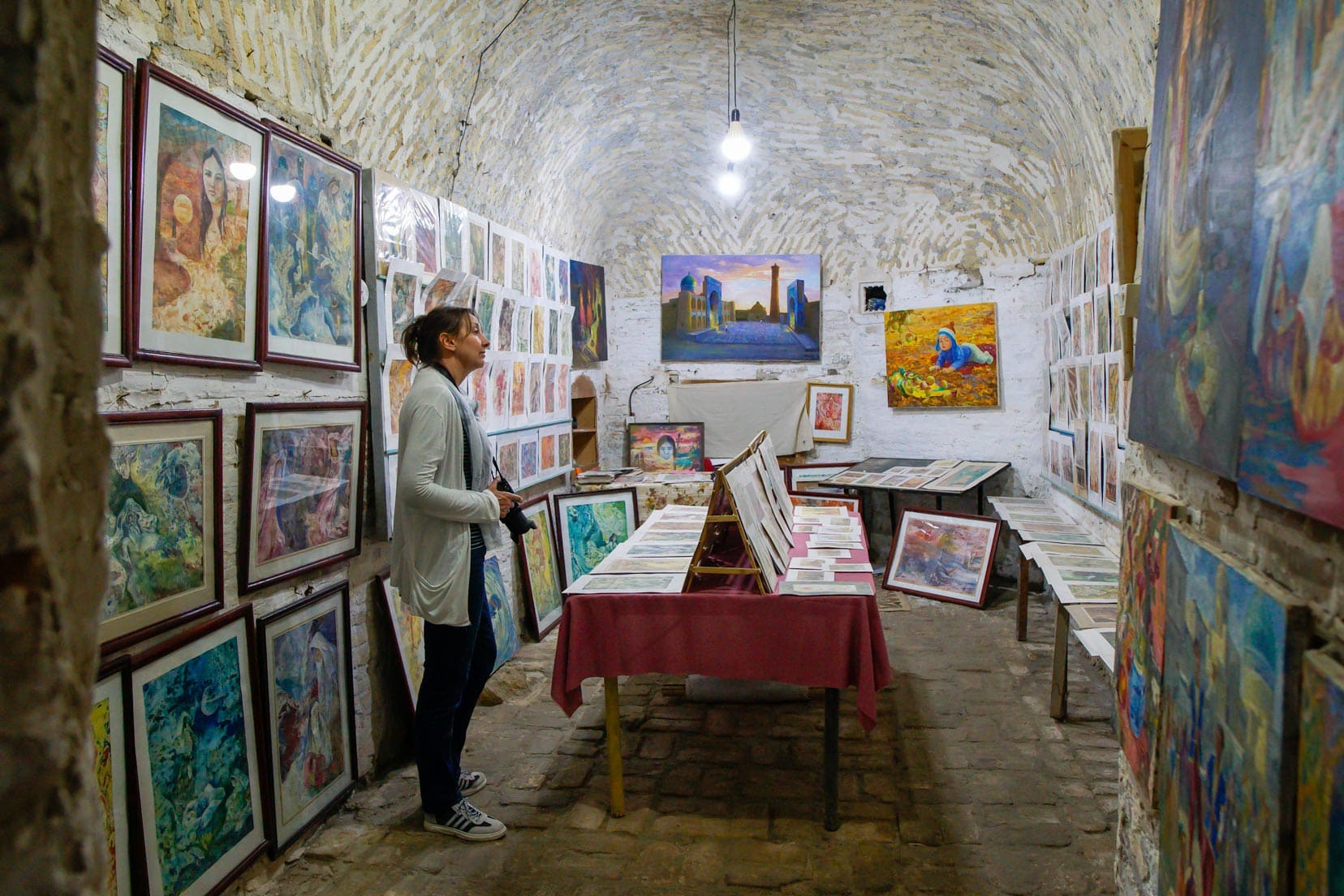
8. Gaze at the Kalon Minaret (part of the Po-I-Kalyan Ensemble)
The Kalon Minaret is one of three main buildings that form the Po-i-Kalyan ensemble. The other two, close by, are the Poi Kalyan Mosque and the Miri-Arab Madrasah.
In the old city of Bukhara, the 12th-century Kalon Minaret, at an impressive 45m height, certainly dominates the skyline. This also makes it a handy landmark for determining one’s bearings when walking the streets.
In 1220 A.D., the conqueror Genghis Khan was so impressed with the Kalon Minaret that he commanded it to remain standing.
Until the early 20th century, those caught breaking the law were marched to the top of the minaret and pushed over — sealing their fate.
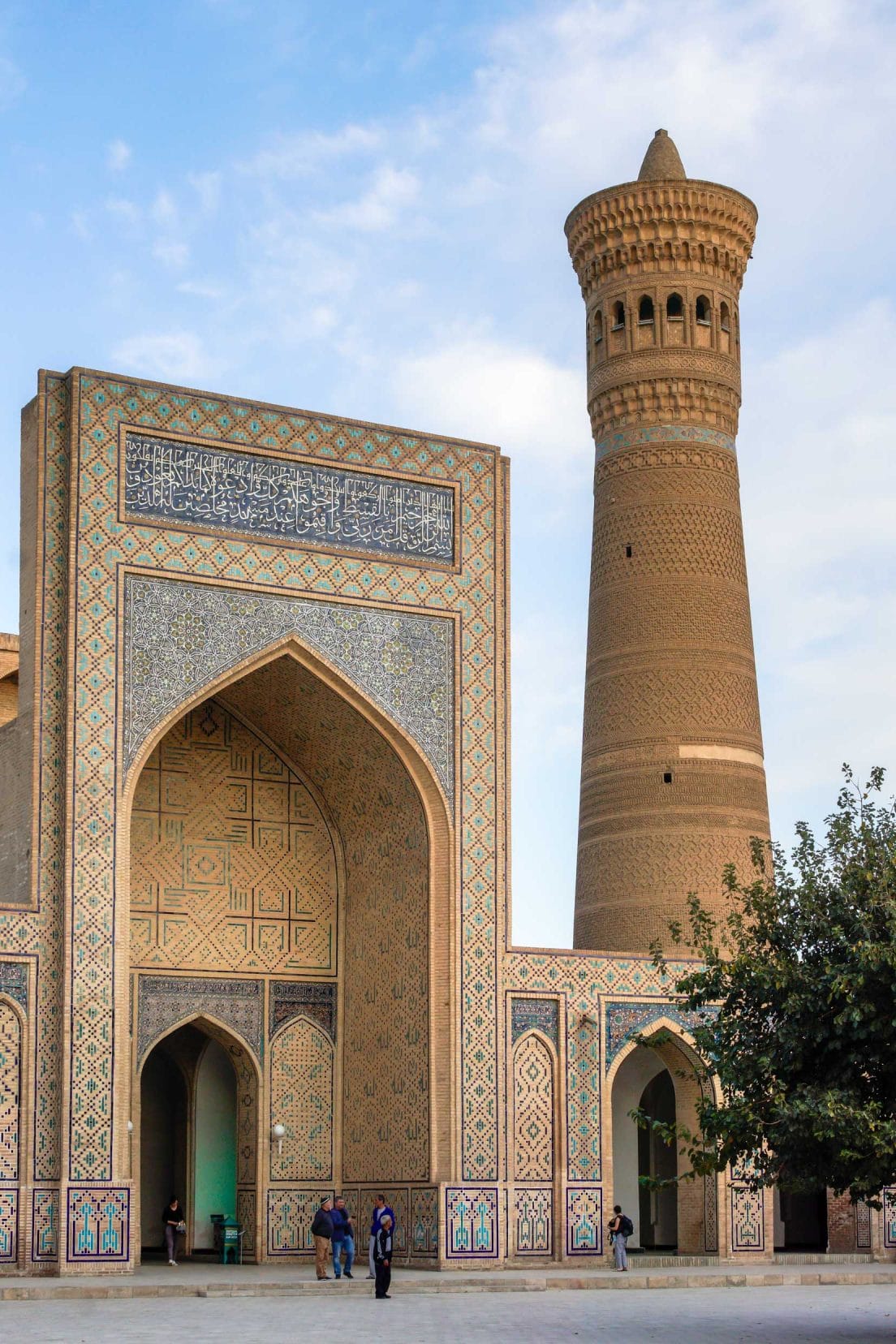
Visiting the Kalon Minaret at sunset offers great views and maybe a picture. Although we would have liked to climb the minaret, we were not permitted.
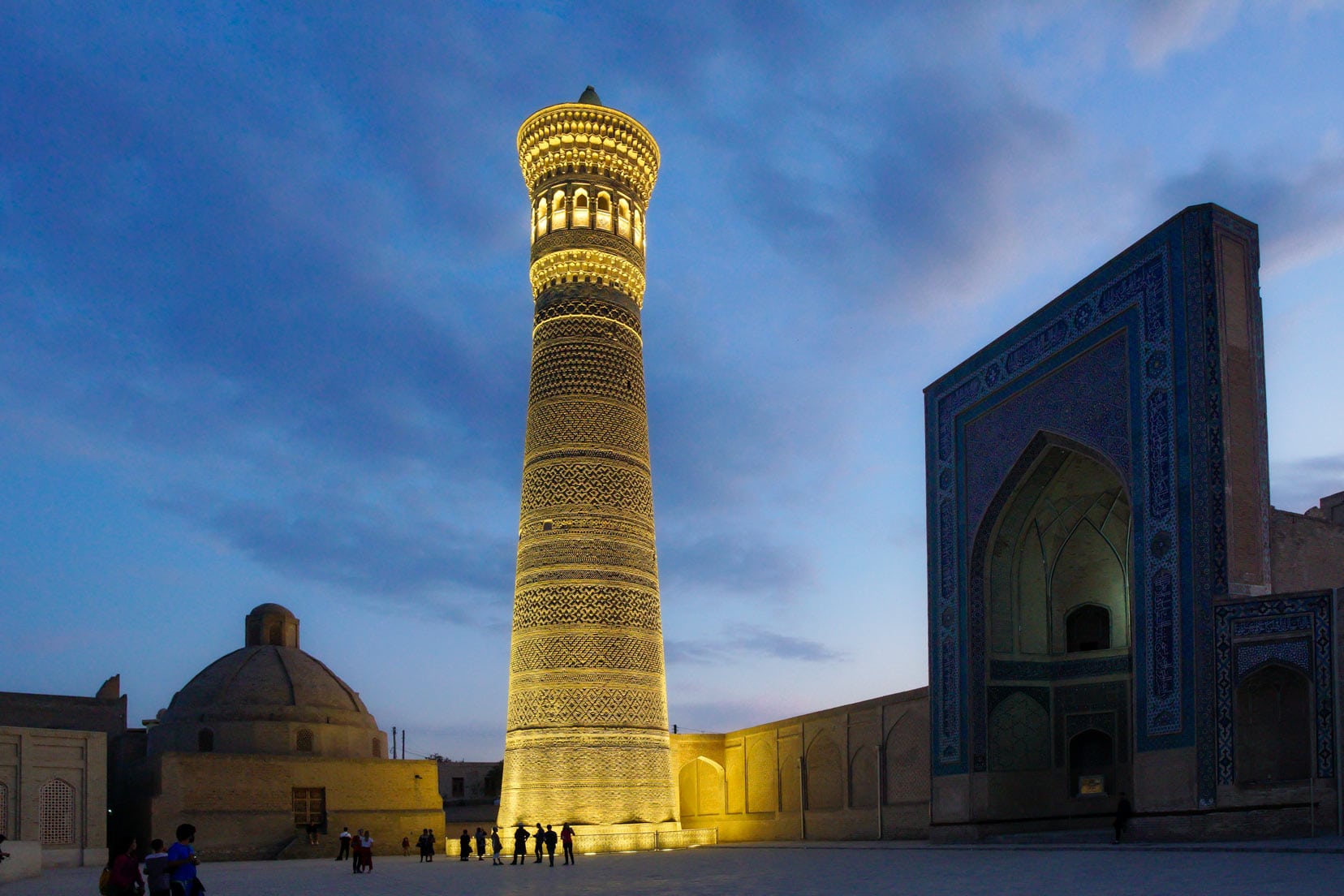
9. Visit Poi Kalyan Mosque (part of the Po-I-Kalyan Ensemble)
The 16th-century Poi Kalyan mosque is something to behold. Its size is only fully realised once you enter its huge, open inner courtyard.
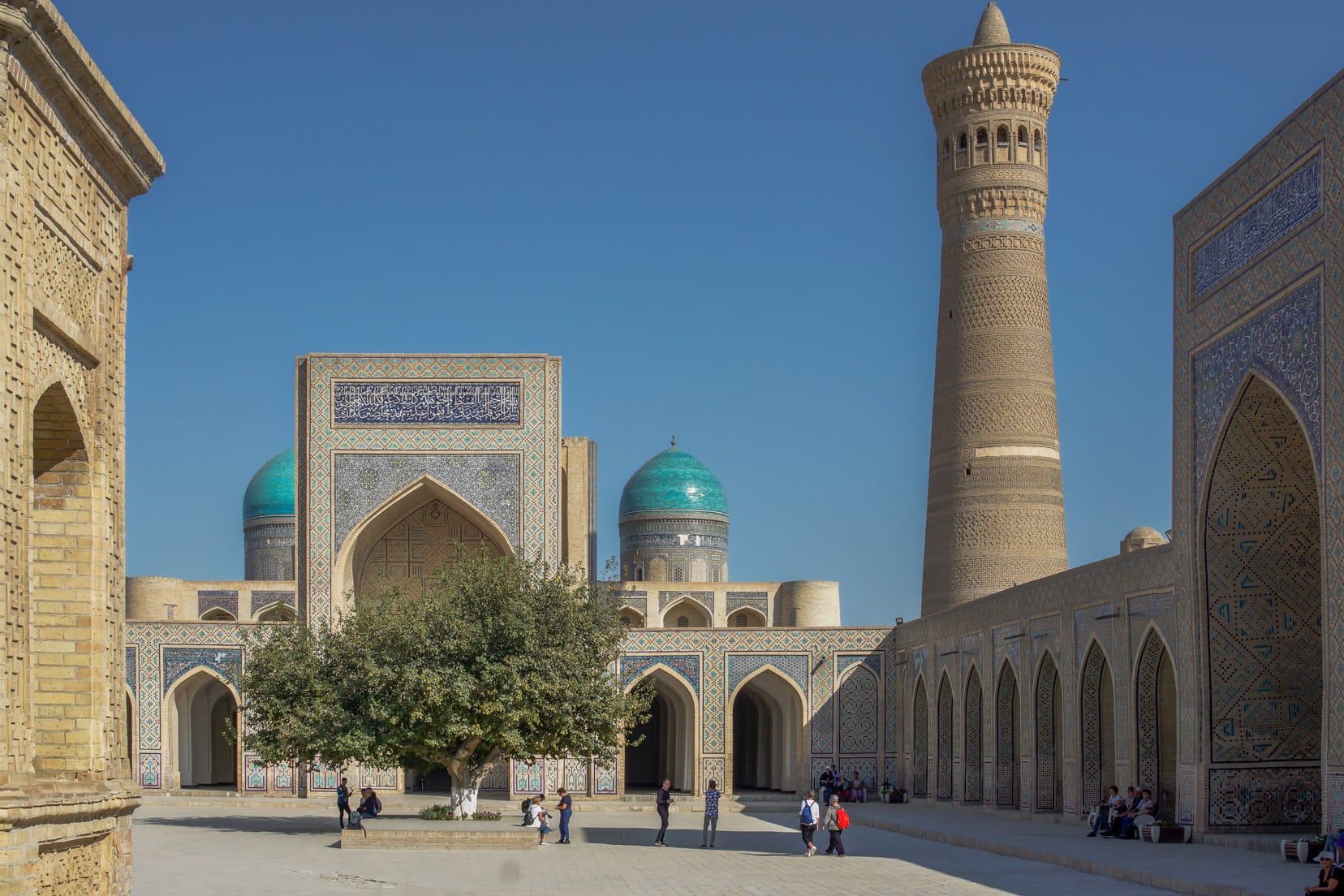
Central to the courtyard is a large, lone mulberry tree that provides respite from the sun with bench seating about its base. Interestingly, the minaret that forms part of the mosque (seen in the above image) dates back to the 12th century.
The magnificent Poi Kalyan mosque contains galleries that encircle the courtyard. Its staggering 288 domes rest on 208 pillars.
Note: The mosque still operates as such and closes to visitors just before the start of sunset prayers.
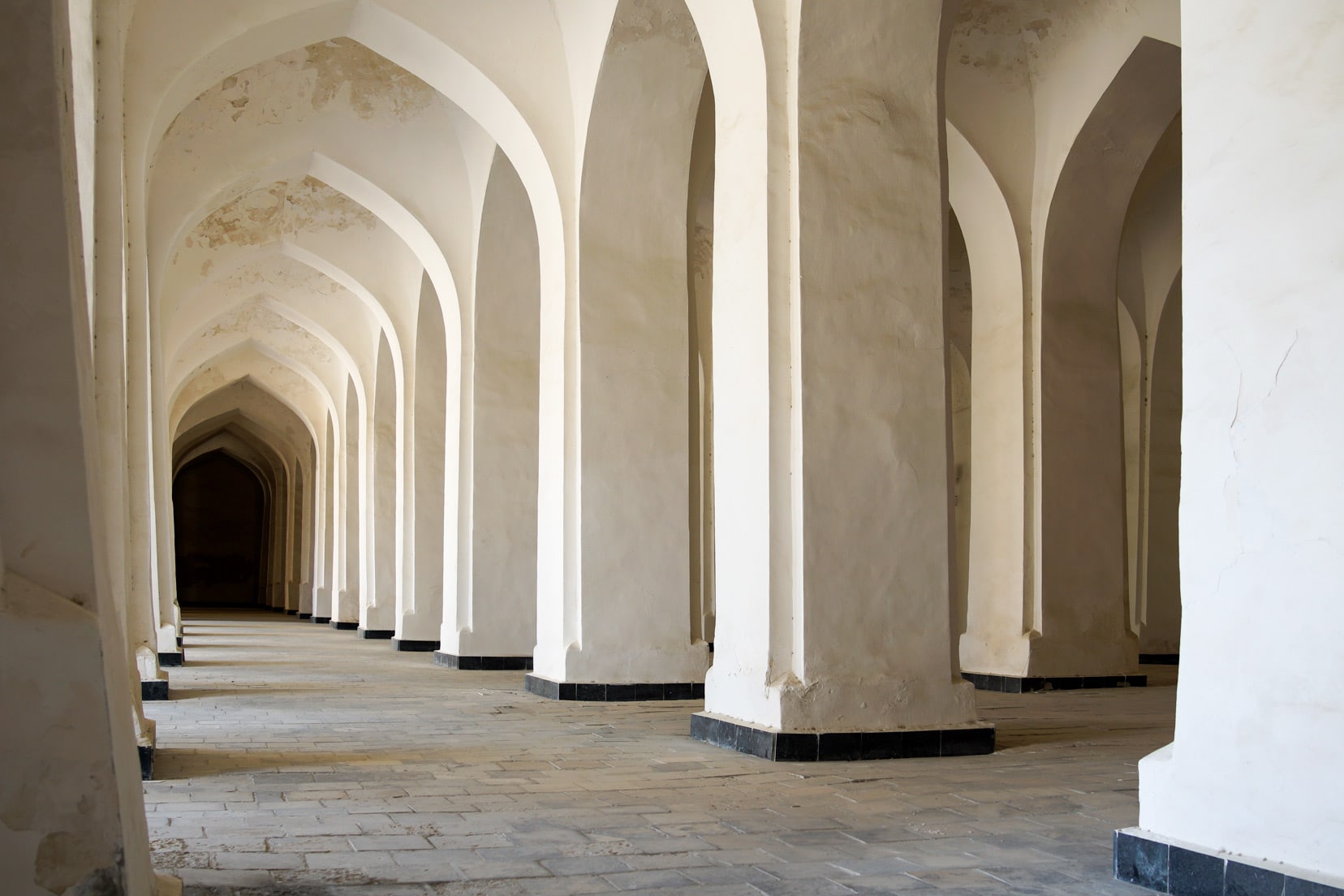
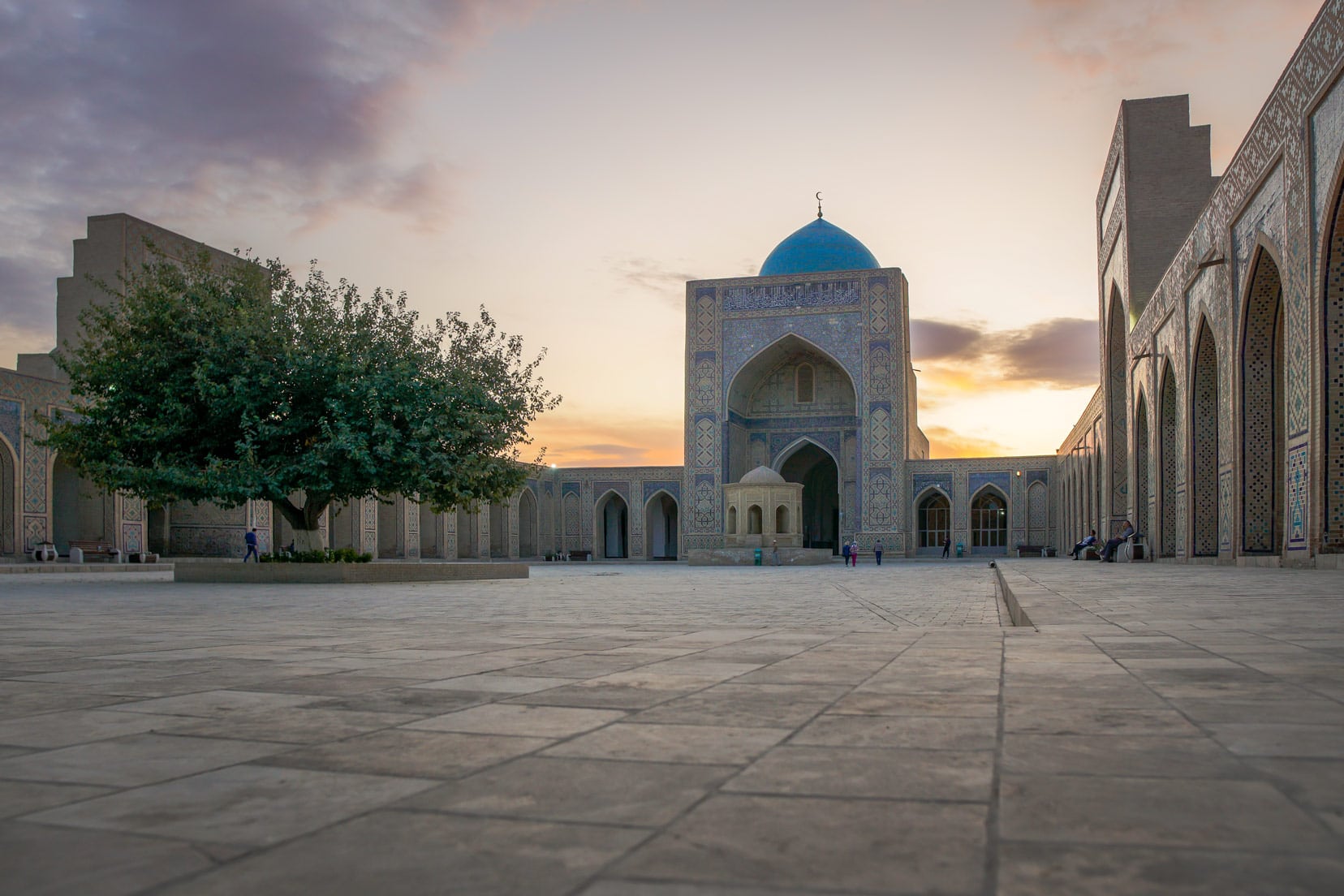
10. Drop by Miri-Arab Madrasah (part of the Po-I-Kalyan Ensemble)
The Miri-Arab Madrasah is located just opposite the entrance to Kalyan Mosque and is recognisable by its two large blue domes and spectacular tiled mosaics.
This madrasah was completed in 1535 A.D. and is still being used to educate future imams and religious leaders.
The interior is honeycombed with hujra, dozens of small cells used as student dormitories.
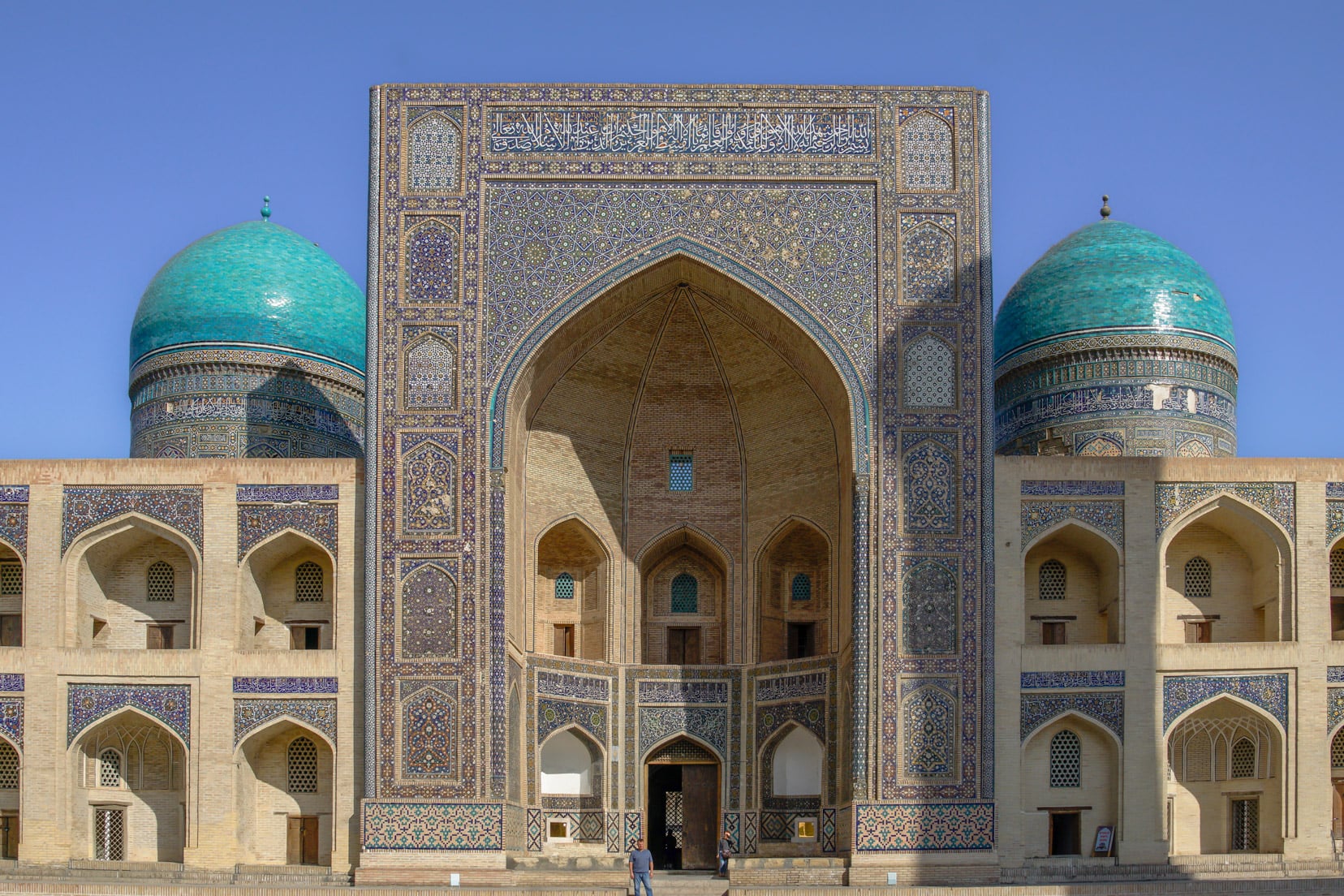
During the reign of the Soviets, the operation of the Miri-Arab Madrasah was initially suspended but allowed to re-open in 1945.
11. Admire the Abdulla Khan and Modary Khan Madrasahs
These two 16th-century madrasahs, Abdulla Khan and Modary Khan face each other and are located close by the eastern entrance to the Samonids Recreation Park. Both madrasahs have impressive blue-tiled mosaics and beautifully inscribed portals.
During our visit, we could peek into the Modary Khan madrasah courtyard, which looked generally neglected and, at a guess, possibly unused.
It was refreshing to see one of Bukhara’s historic buildings that had not undergone complete restoration and yet still retained its original structure.
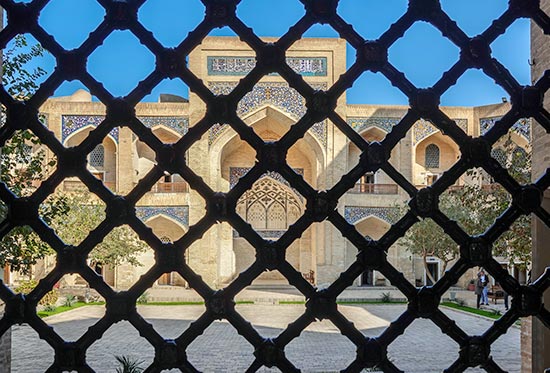
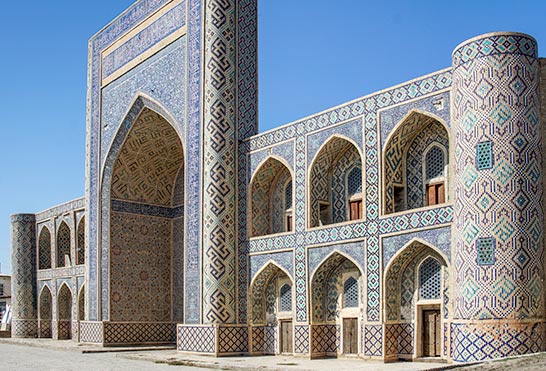
12. Visit the Samanid Mausoleum
The Samanid Mausoleum, found in the northern part of the Samonids Recreation Park, was built in the 9th century. It is quite special because it was built when Islam forbade the erection of any post-mortem monuments.
This family crypt lacks the intricately coloured mosaics found in buildings of later centuries. Instead, symmetrically patterned mud bricks give the building its uniqueness.
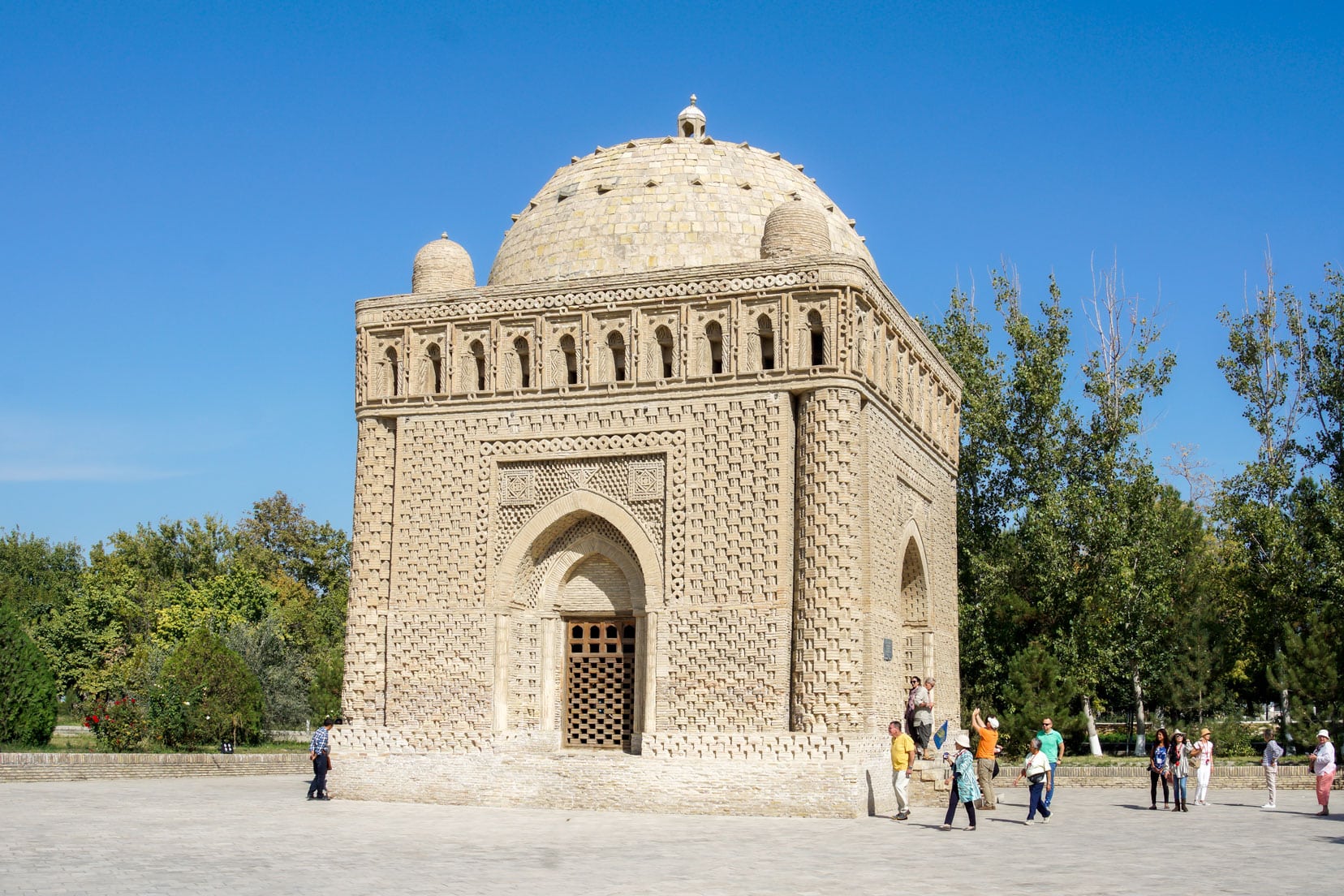
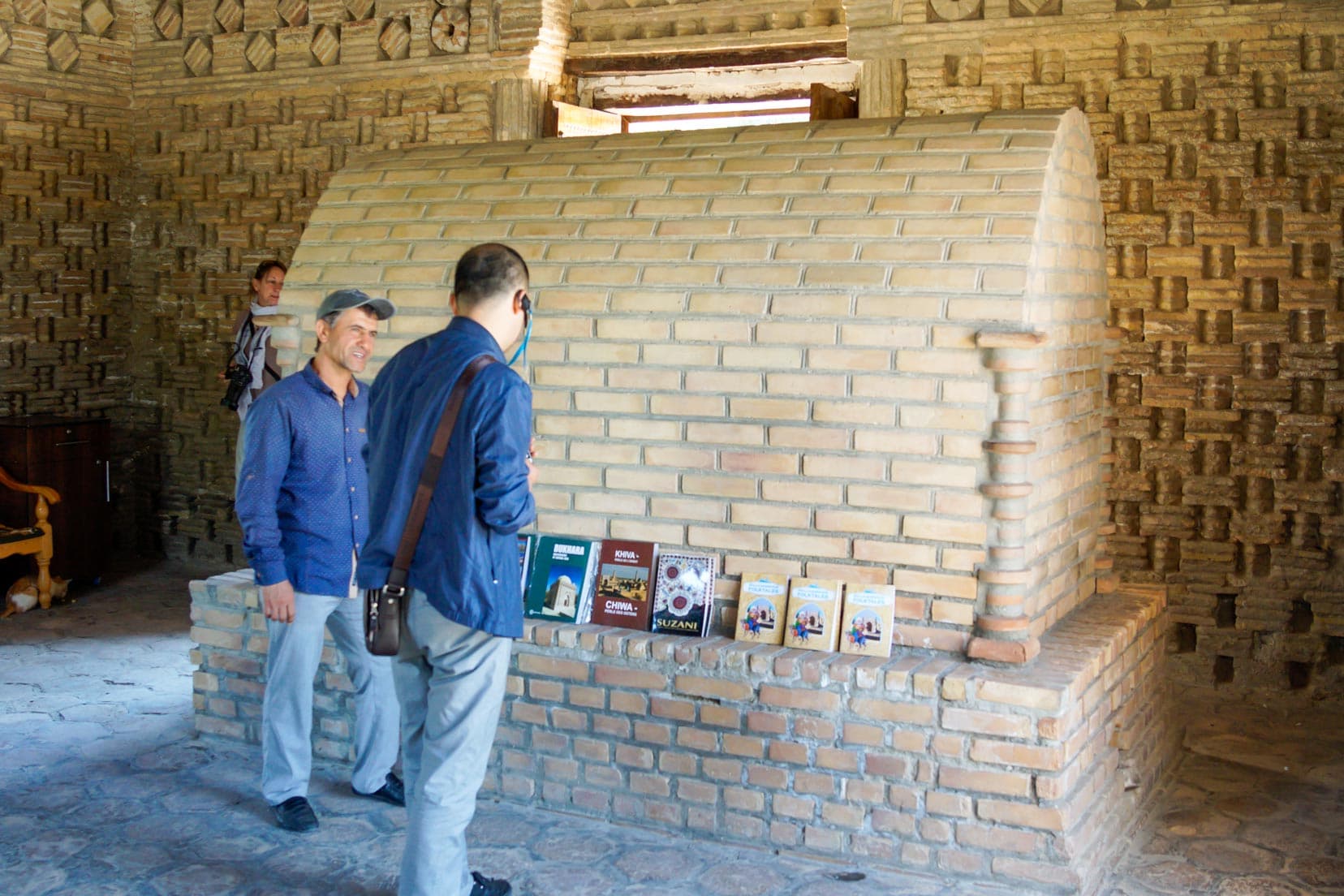
13. Be Amazed at Bolo Haouz Mosque
Setting itself apart from other mosques, the 18th-century Bolo Haouz Mosque rises above the ground on twenty beautifully coloured and sculptured wooden columns.
Bolo Hauz is opposite the Ark Fortress and serves as a Winter and Summer prayer room.
Bolo Haouz translates as above the pool, which references the pools of drinking water that used to be in front of the mosque but were in-filled during Soviet times because of the spread of disease.
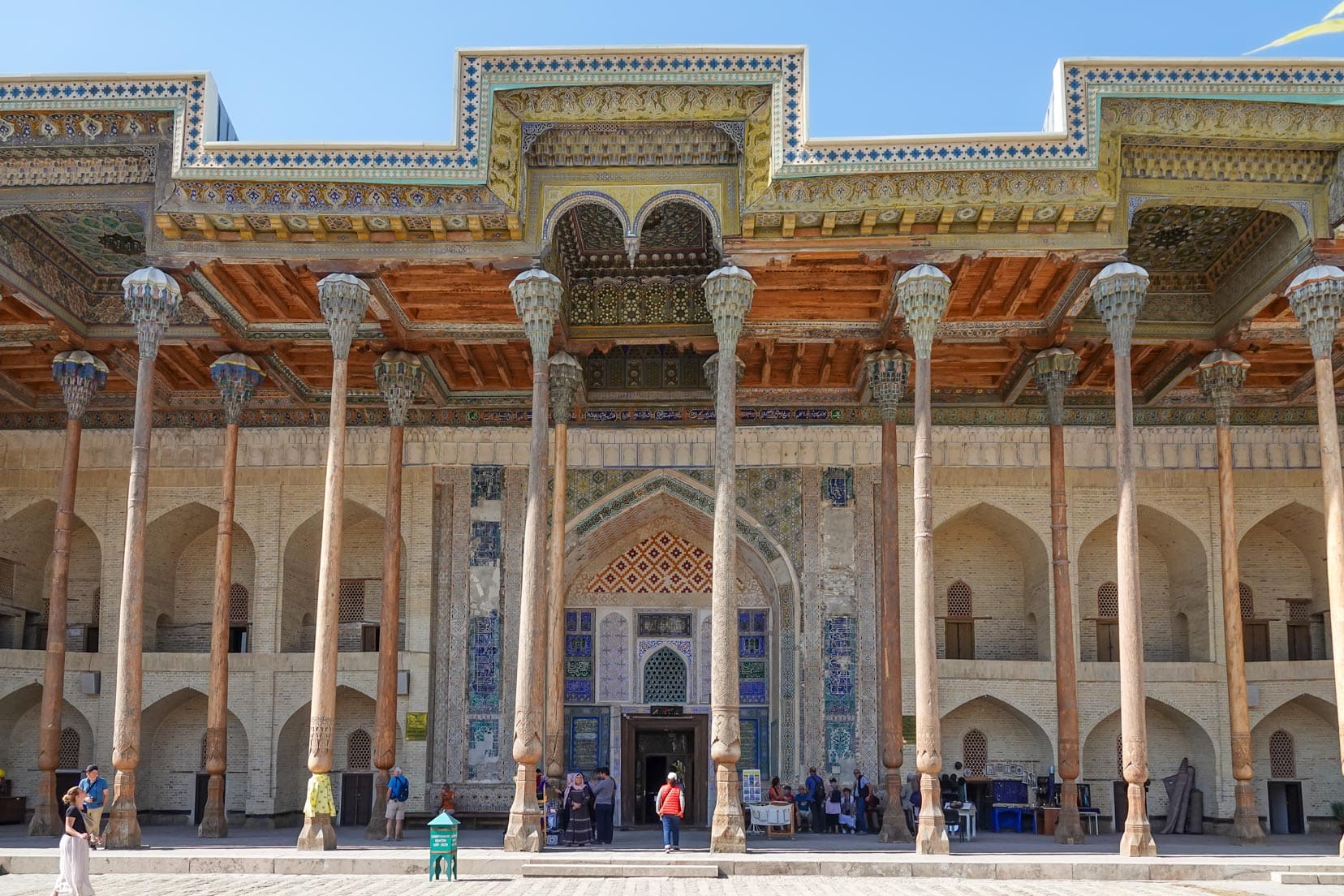
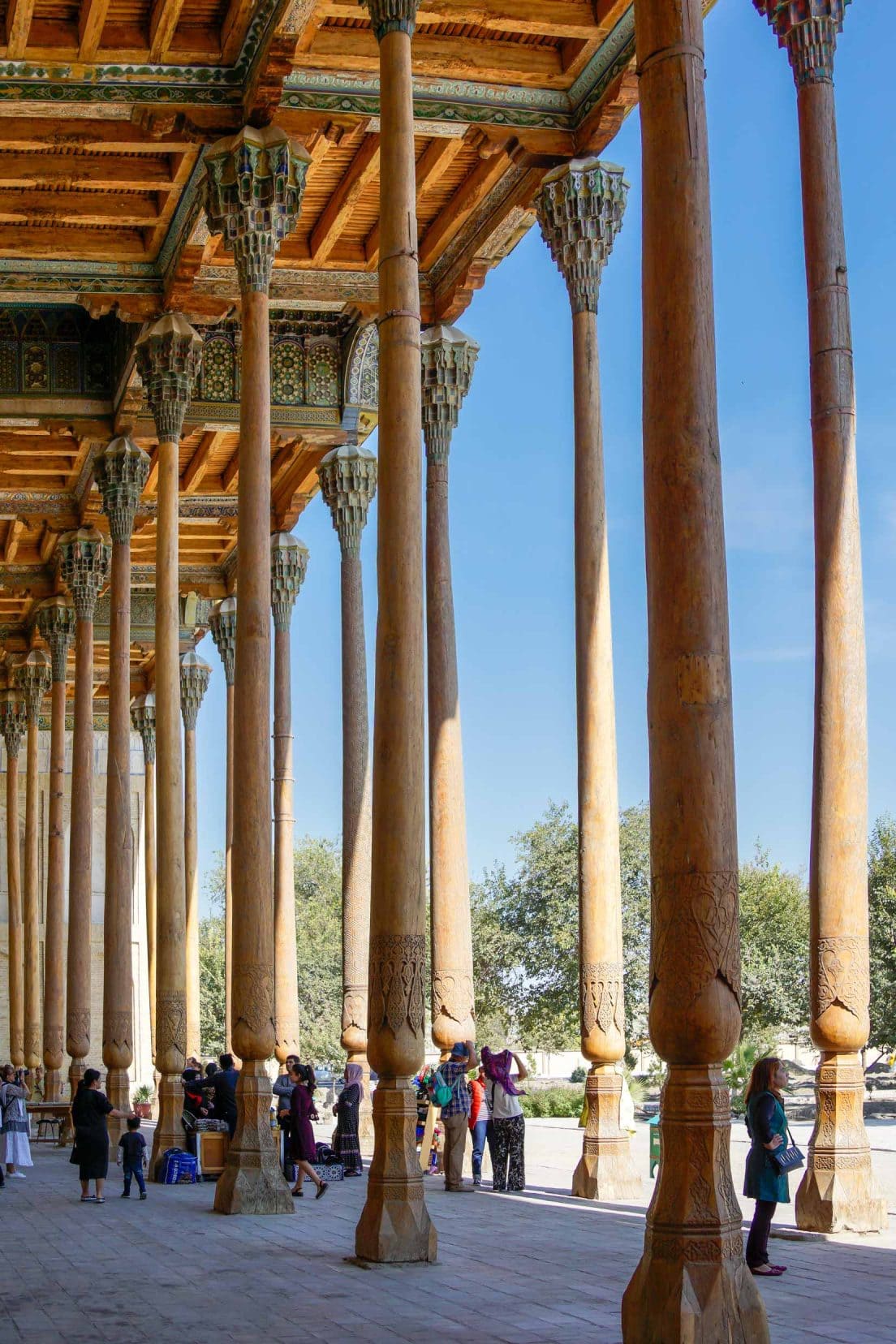
Bolo Haouz has an exquisitely patterned ceiling.
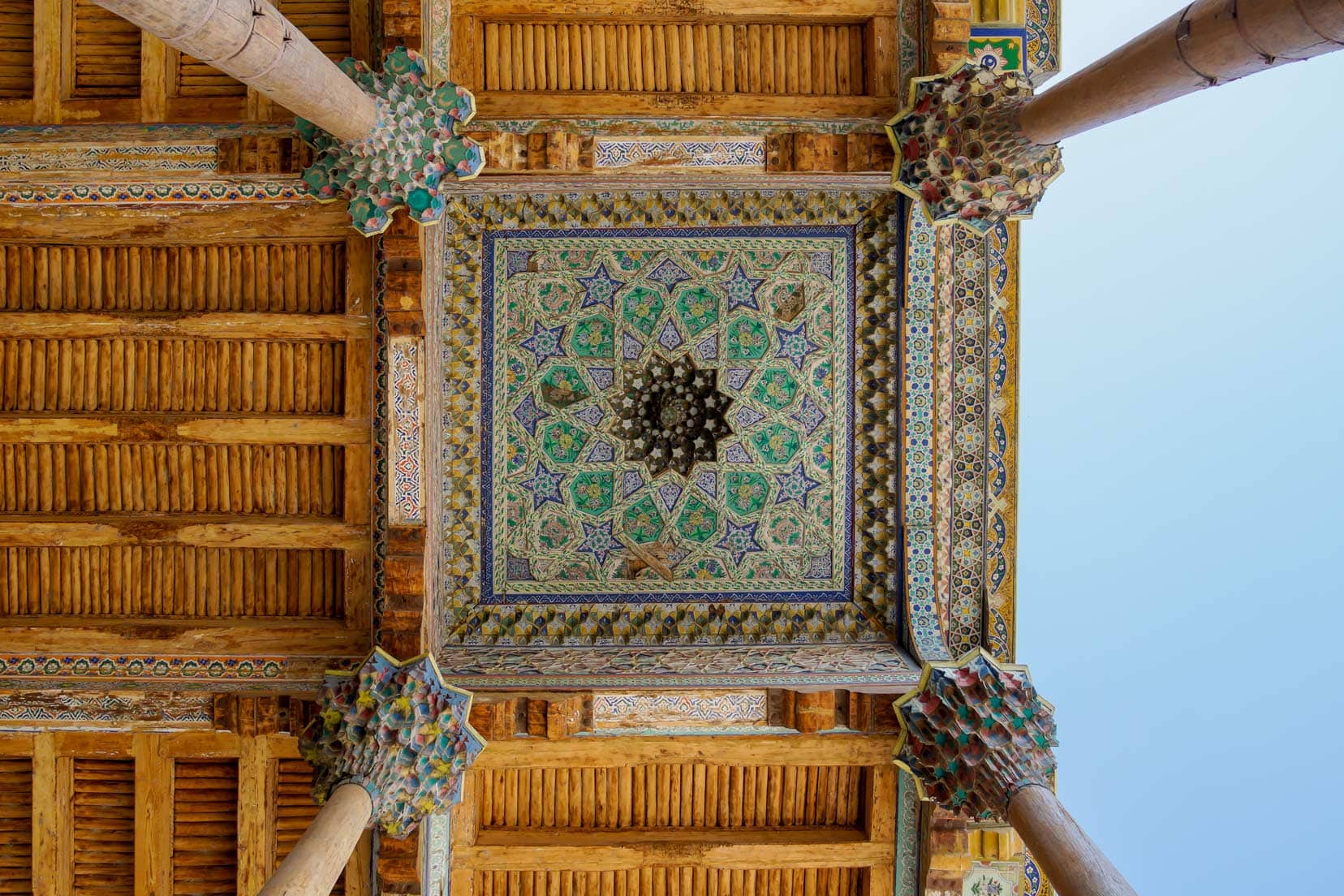
14. The Ark
The Ark is a huge earthen-walled citadel dating back to the 4th century, covering an area of roughly two hectares.
This structure was a residence for the ruling Khans but has been converted into a museum.
Ark is actually taken from the Persian word Arg, which refers to a castle or citadel.

Walking from the Kalon Minaret, The Ark is just a few hundred metres away.
Access to the interior of The Ark is via a long uphill passageway through a massive portal. The walls tower above the surrounding flatlands to a height of 20m.

The inside of the Ark boasts a throne room, music pavilion, jewellers, stables, stores, jail and other rooms, which can all be viewed once inside the walls. The entrance fee per person is SOM 40,000 or approximately USD $ 3.50 per person.
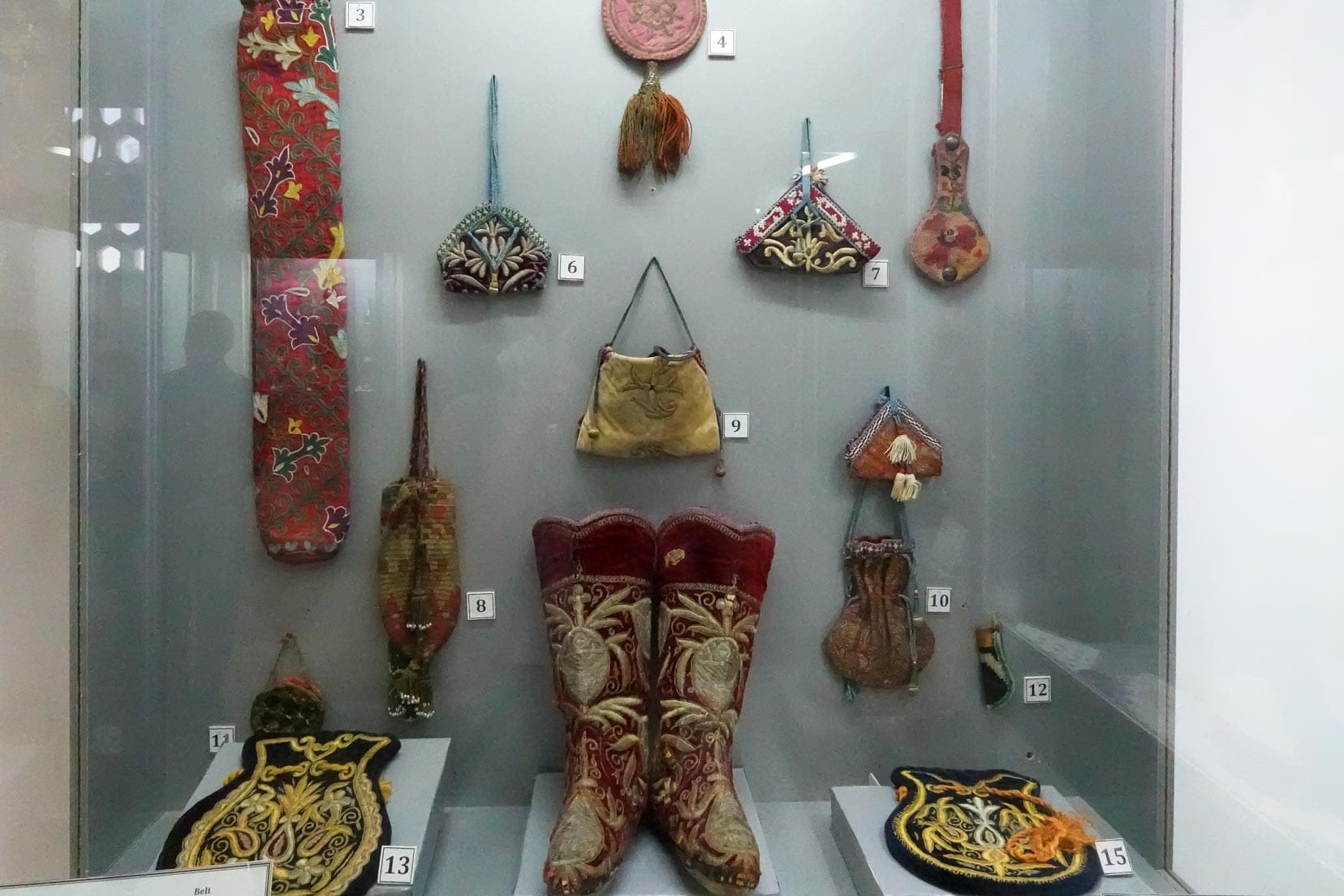
15. Climb the Sukhov Observation Tower
From The Ark’s parapets, you can see a 20th-century modern observation tower called the Sukhov Tower.
This 33-meter-high tower was originally designed by Vladimir Sukhov as a water tower but became obsolete in the 1970s.

The structure was then converted into a restaurant, which failed.
Finally, it was repurposed as an observation tower, as you see it today. Climbing the tower costs SOM 40,000, or approximately USD $3.50 per person.
It has one of the highest vantage points across Bukhara.

16. Visit the Memorial Complex of Imam Al-Bukhari
Within 400m of the Sukhov Observatory Tower is the striking memorial to Imam Al-Bukhari, who lived in the 1st century as one of the most revered Imams of Islam.
He collected some of the most authentic sayings of the Prophet Mohammed, which number in their thousands.
His tomb and a museum are inside this complex, which was not open to the public during our visit.
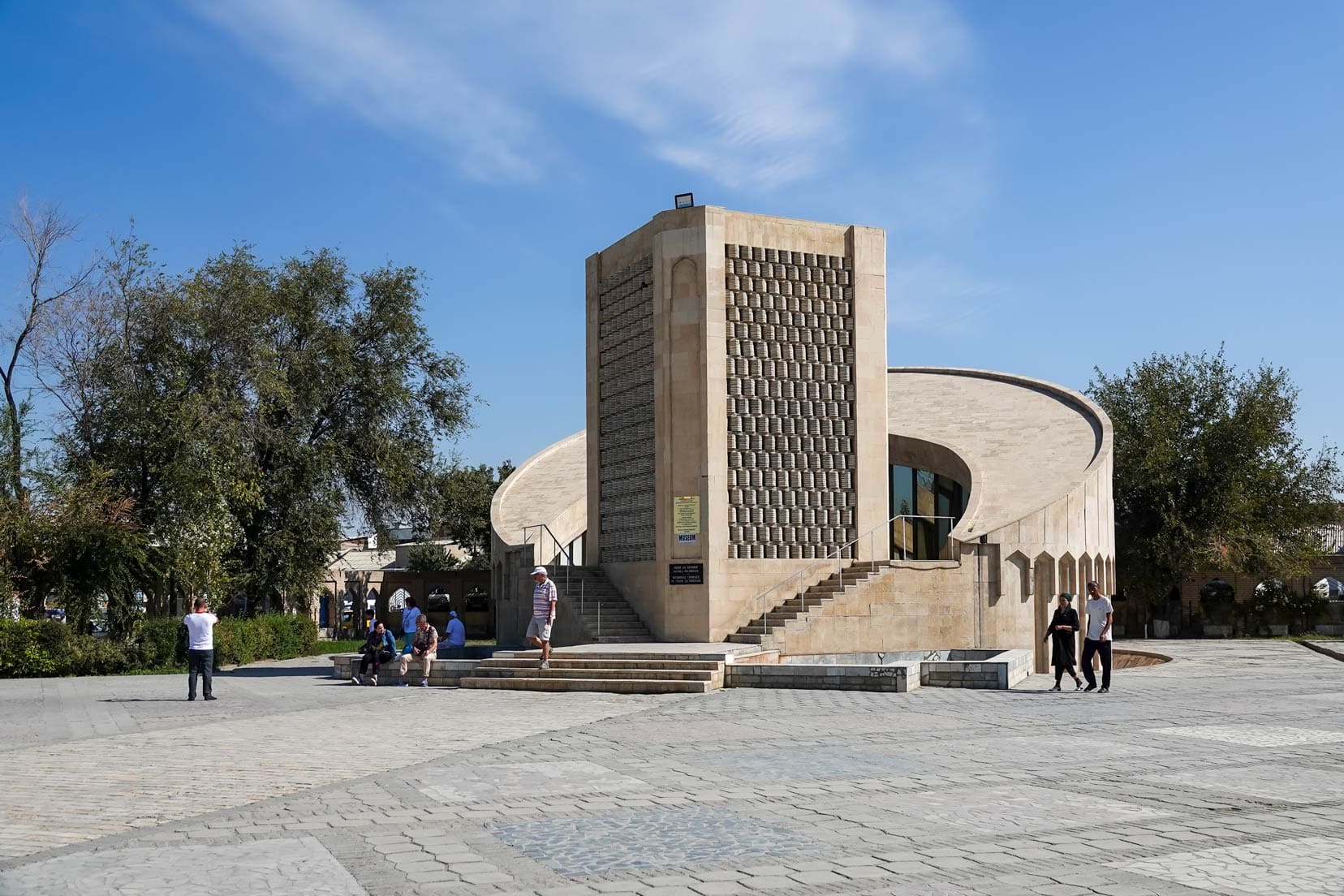
17. Wander Through Bukhara’s Old Town
Ambling through the streets of Bukhara’s old town is interesting.
Seemingly forgotten and neglected madrasahs and mosques dot the streets within easy walking distance of each other.
The buildings are generally chained shut; however, you can often spy through small openings to see the unkept inner courtyards.
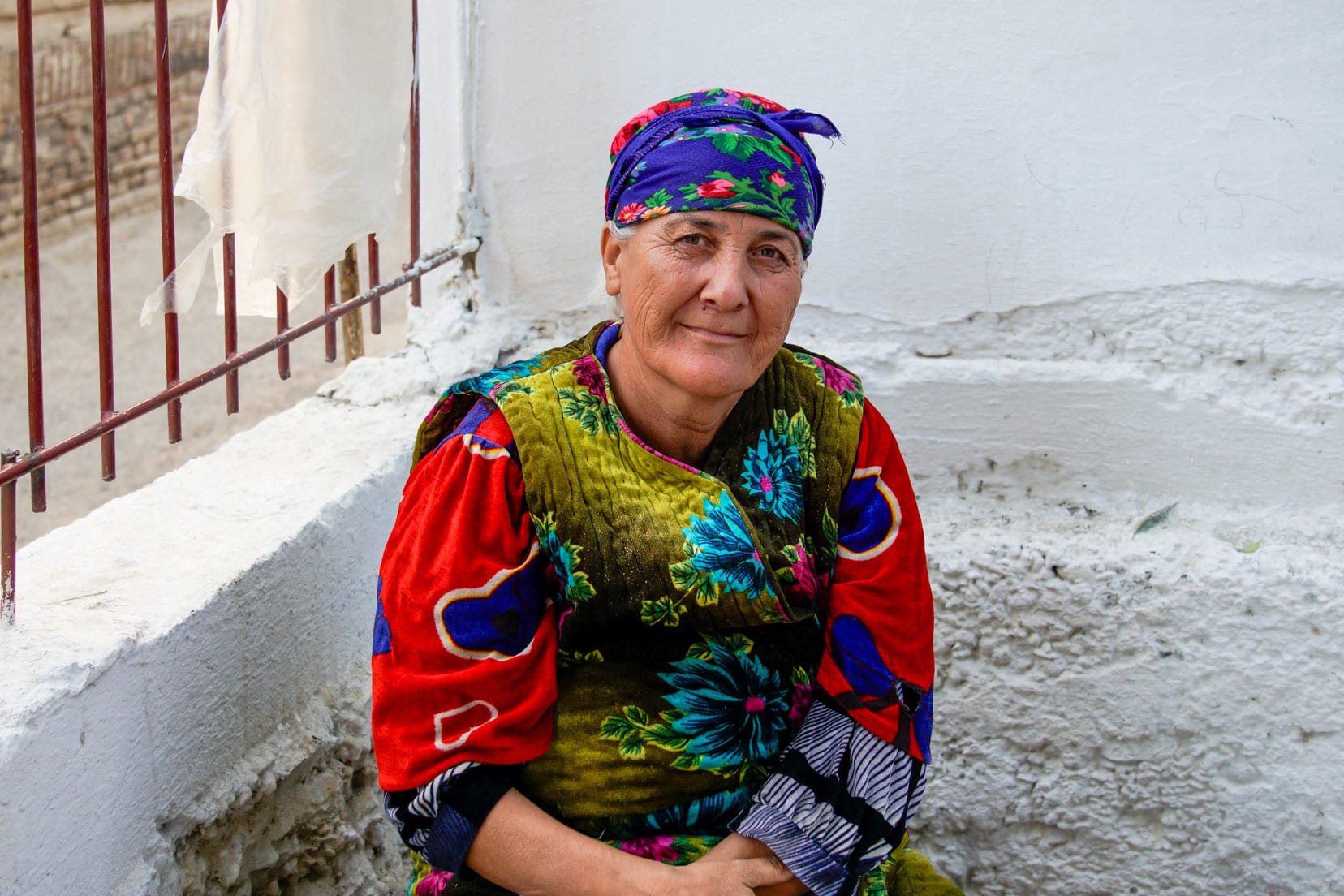
Local markets spring up in most of Bukhara’s free spaces, whether on the pavements or back streets.
We found the locals to be warm and friendly and not pushy about making a sale, which made our visit just that much more special.
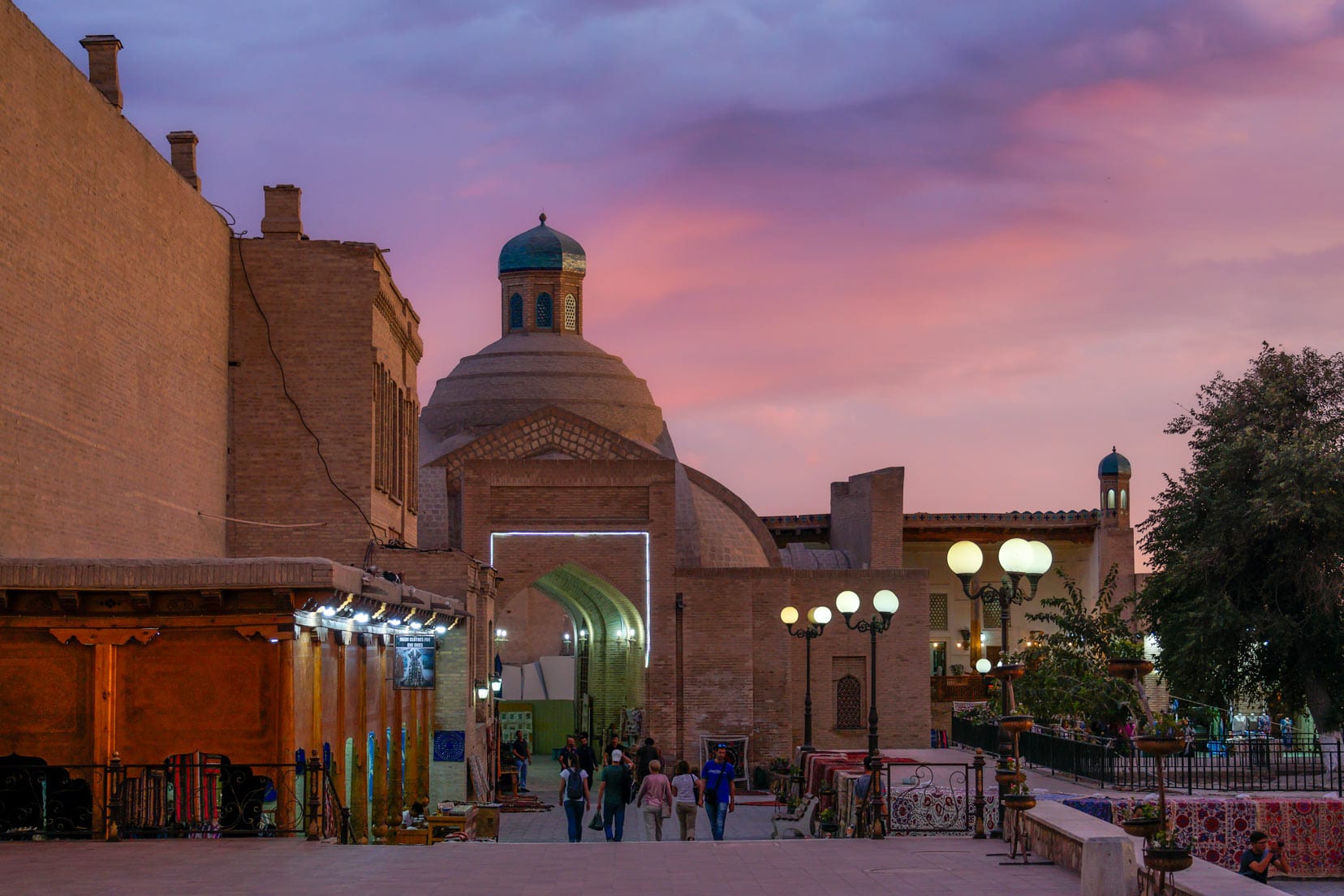
18. Maybe Think Twice About a Visit?: House Museum XIXth Century
At this location is a small dilapidated dwelling with a hand-painted sign, House Museum XIXth Century, outside its courtyard. The yard was filled with random collections of local bric-a-brac without meaning.
A dumping ground of sorts.
At the owner’s insistence, we reluctantly parted with 20,000 SOM, even though no prices were on display. The owner claimed great views of the old city from the rooftop, but I can personally vouch that this was not the case—only the rooftops of nearby homes.
The ascent itself was rather precarious, with frail roof timbers. We recommend avoiding this place.
19. Weddings In Bukhara Uzbekistan
It is popular for newly betrothed couples to have their wedding photos taken in and around the Madrasahs.
The madrasahs’ traditional colours and brick workmanship give the joyous event a true Uzbek feel.
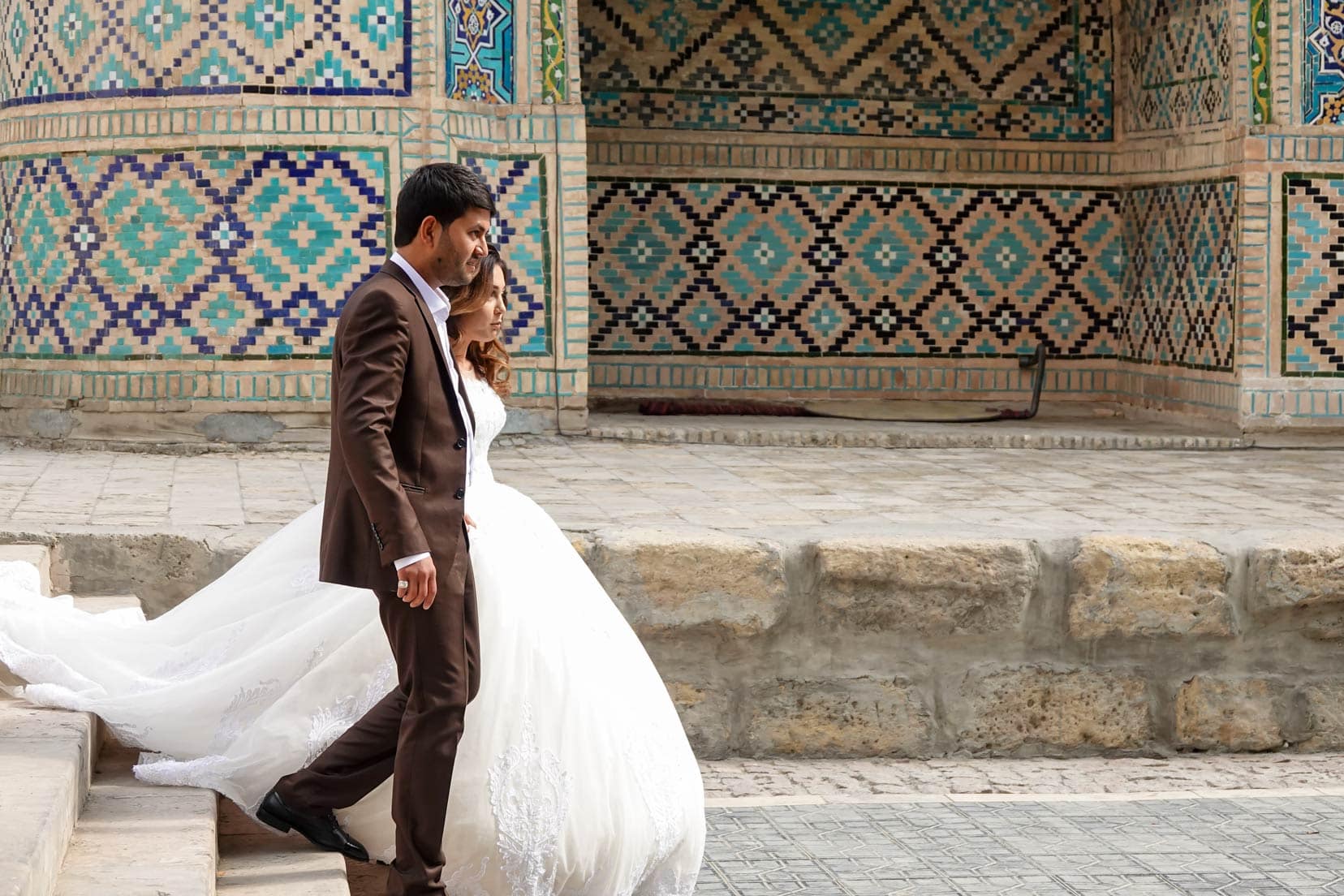
20. See Local Green Tea Being Brewed
Tea is a traditional drink in Uzbekistan.
It is customary to start and finish meals with green tea, the most popular of which is kuk-choy.
It is enjoyed without sugar.
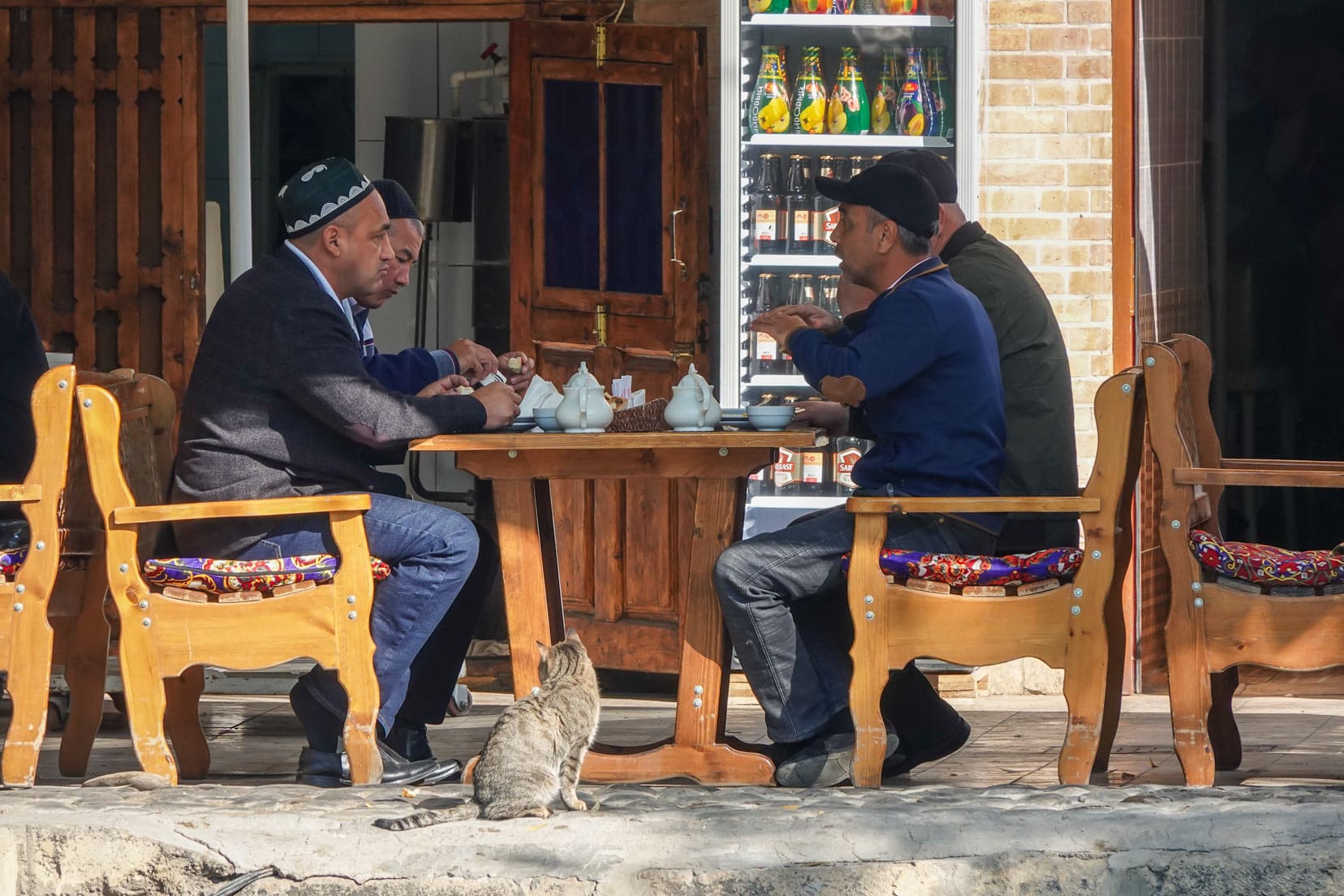
Filling the teapot is a meticulous process, completed in stages. The pre-warmed teapot is firstly half-filled, then after a couple of minutes, 3/4 filled, and finally, after another couple of minutes, filled to the top.
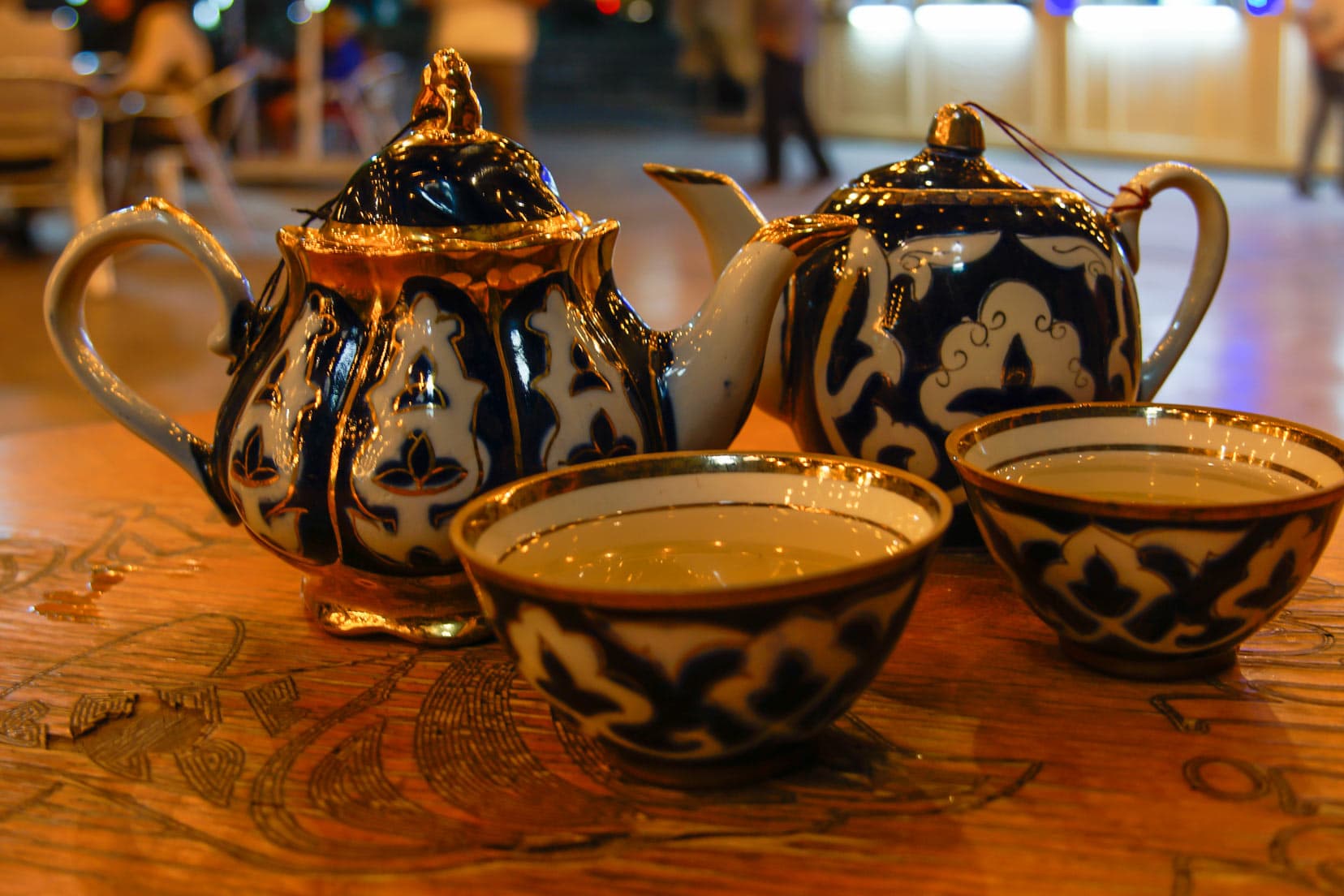
21. Admire the Street Markets
You can expect to see a lot of street markets in the old town of Bukhara.
Small pop-up stalls are commonplace. Whether selling souvenirs, food, or handicrafts, there’s sure to be something to pique your interest.
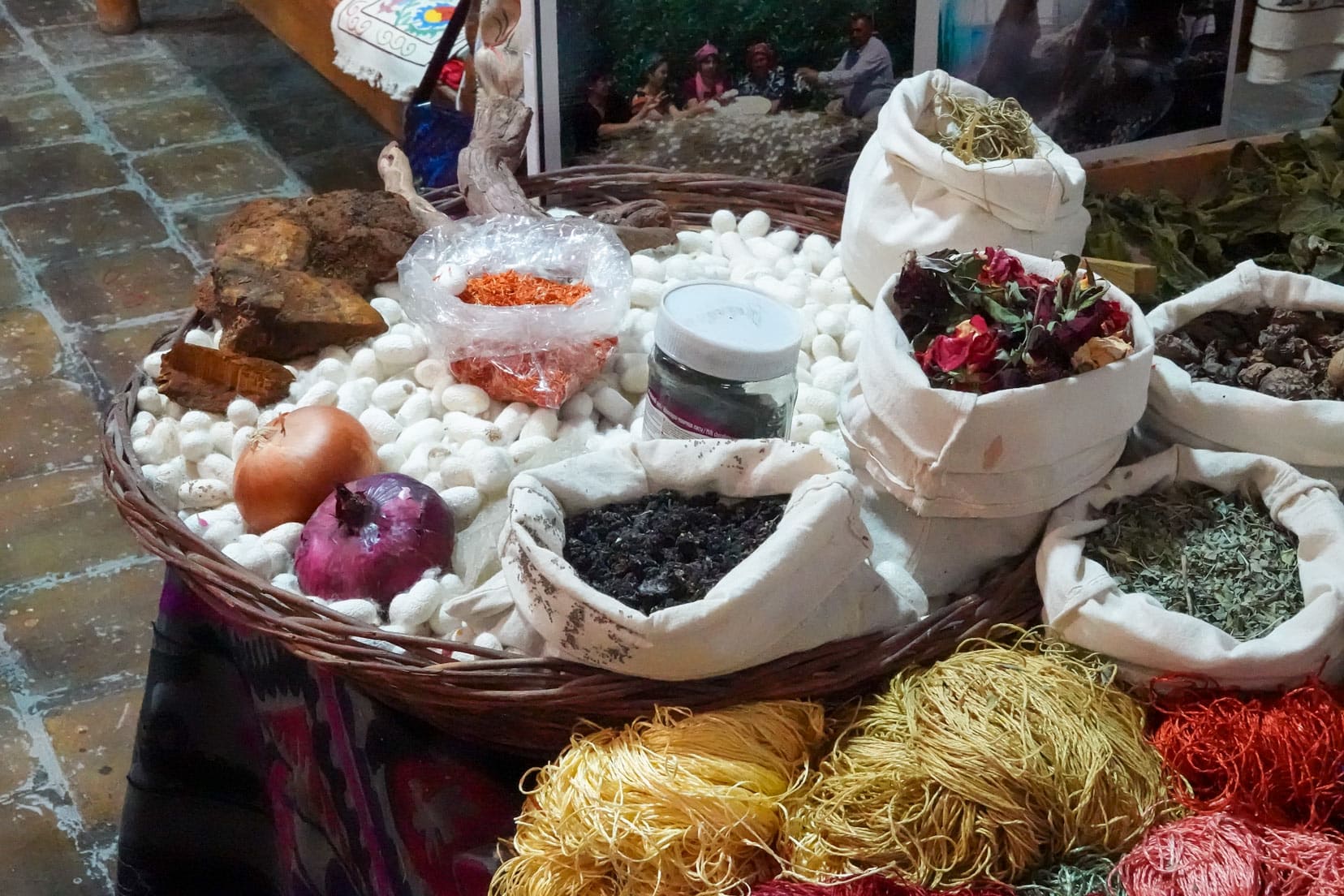
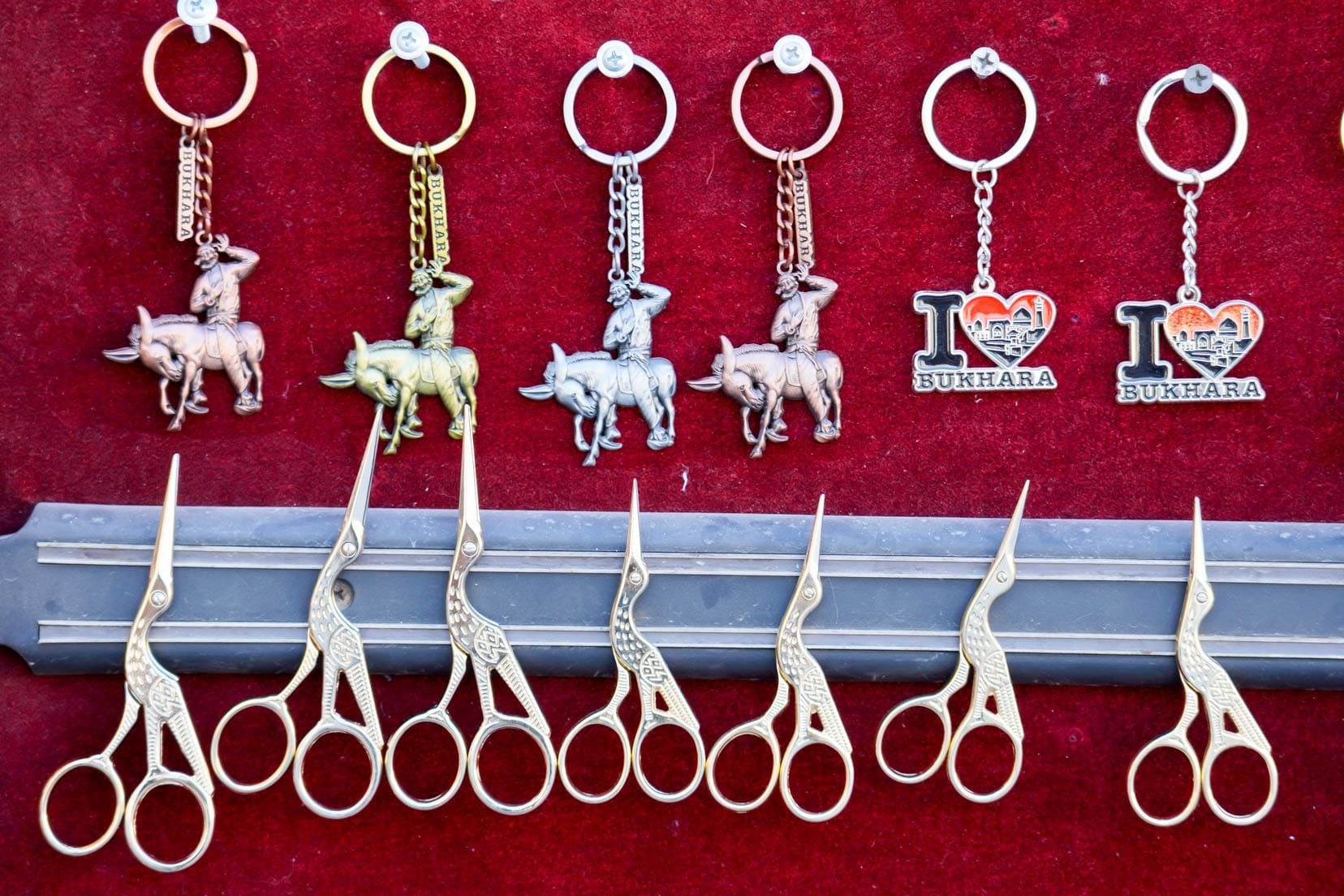
Where to Eat in Bukhara
Look for Lyabi Khause, an old water storage pond in the old town. A very popular open-air restaurant and cafe await.
Nestled among the madrasahs, this open space offers a perfect relaxing setting. Enjoy local nighttime music while savouring the great food on offer.
For more places to eat, check Lonely Planets Bukhara Restaurant Guide here.
Where to Stay in Bukhara
We stayed at the Amir-Yaxyo Hotel in Bukhara, but it is not currently open. You’ll want to be close to the centrally located Lyabi-Hauz when searching for accommodation.
The Meros Hotel ticks all the boxes.
🏨 Accommodation Option: Meros Hotel
Rating: Exceptional | ⭐️10/10 (67 reviews) | Free Breakfast | Free Wifi |
| Superb Location: 100m from Lyabi-Hauz |
✅ BOOK NOW
For more options – check out the Bukhara accommodation deals available on Booking.com
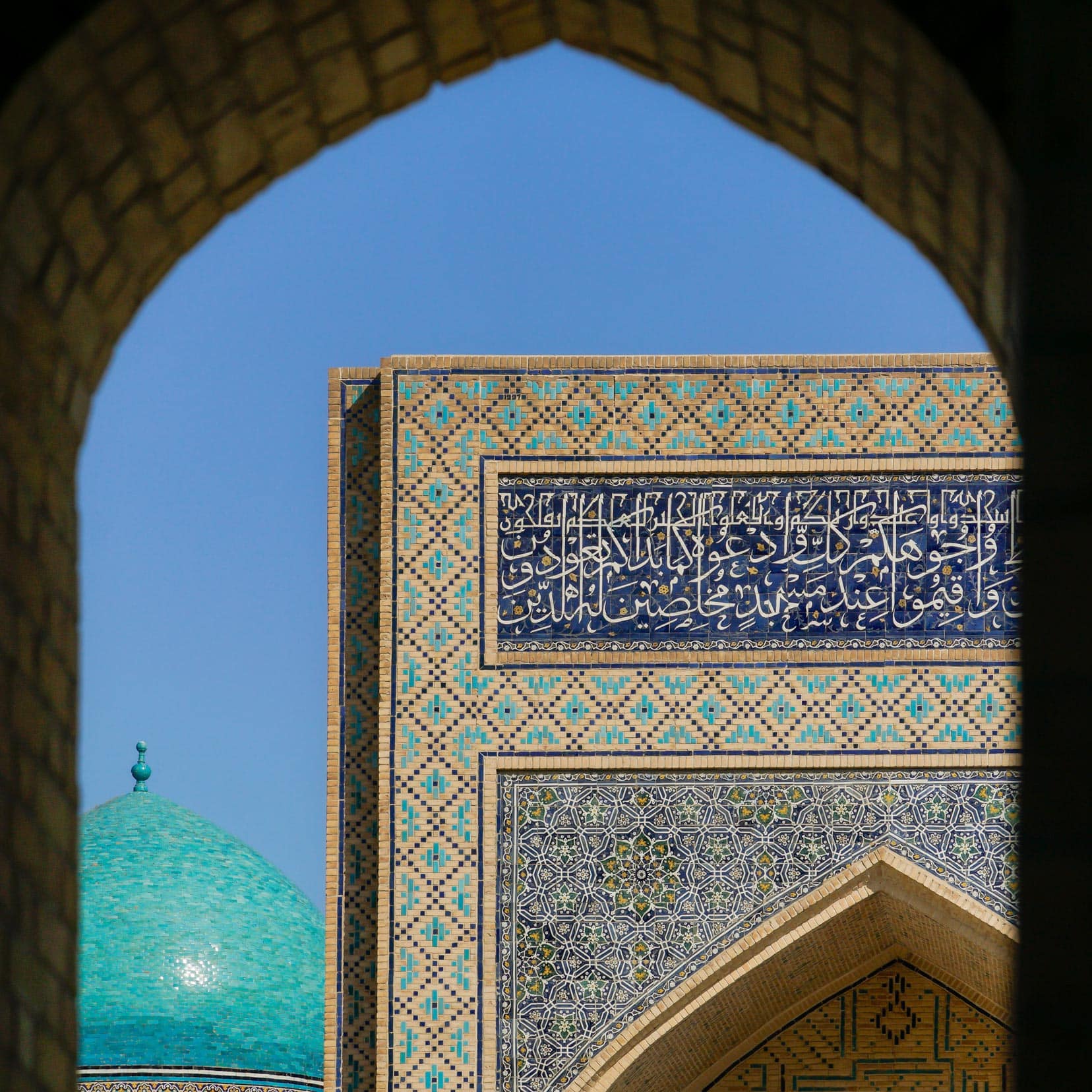
Bukhara FAQ’s
Is Bukhara Worth Visiting?
Absolutely, Bukhara is worth visiting. This UNESCO World Heritage site has over 140 madrasahs, mosques and other historical sites that make a visit essential; especially if you’re in Khiva or Samarkand.
How Many Days Do You Need in Bukhara?
Our recommendation is to spend two full days exploring Bukhara. There is much to see, and it shouldn’t be rushed for an immersive experience.
What Is Bukhara Famous For?
Bukhara is most famous for its UNESCO-listed city centre, which features remarkable examples of Islamic architecture, such as The Ark fortress and the Po-i-Kalyan Complex.
Things to Do in Bukhara … That’s a Wrap
We thoroughly enjoyed our time in Bukhara. The old town teems with grand monuments and varied attractions that captivate at every turn.
Beyond the well-trodden tourist paths, simply wandering the streets to explore the hidden nooks and crannies can be equally rewarding, often leading to delightful surprises.
Bukhara offers an abundance of activities to fill your itinerary. Enjoy your visit!
Don’t forget to check out our Uzbekistan Travel Guide for lots of tips and info for your Uzbekistan Itinerary.
Do you have a favourite attraction you want to see in Bukhara? Let us know.
Pin and Save for Later
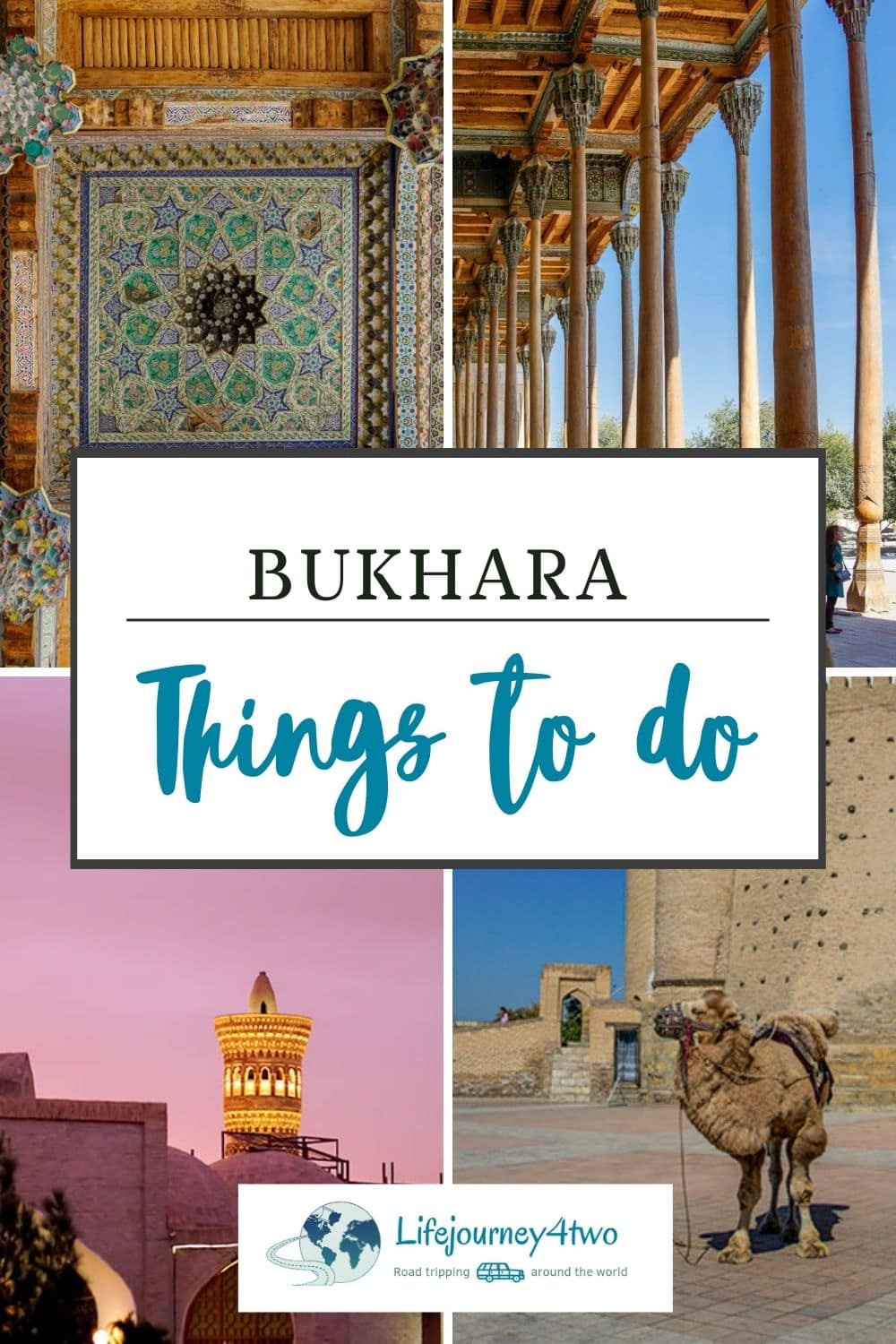
Read More:
Planning Your Travels?
These are the travel resources we recommend and use when planning our trips.
- 🚘 Car Hire: We use DiscoverCars.com
- Motorhome/Campervan Rental: We highly recommend the Motorhome Republic
- 🪪 Order your International Driver’s Licence online here
- 🛏 Book Accommodation: We use Booking.com to find accommodation that suits our budget
- 🐶 Pet Sitting/Pet Sitters: Check Out TrustedHousesitters here (Use our Discount code: LIFEJOURNEY25 for 25% off. )
- Activities and Experiences: Get Your Guide and Viator
- Travel Insurance: Safetywing or World Nomads
- 🥾 Travel Gear and Accessories: Check out our top picks here — Lifejourney4two page on Amazon
For a more thorough list, visit our Travel Resources page here.

